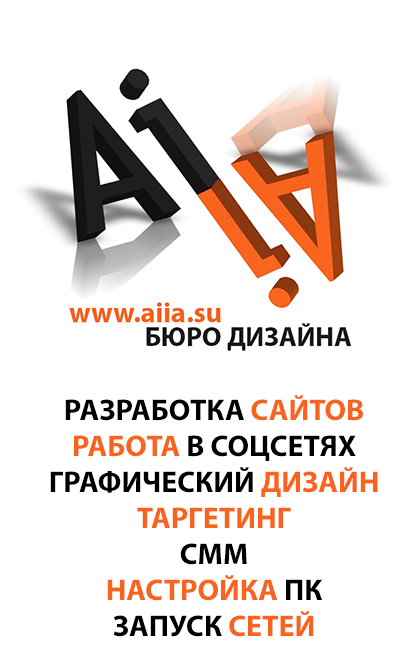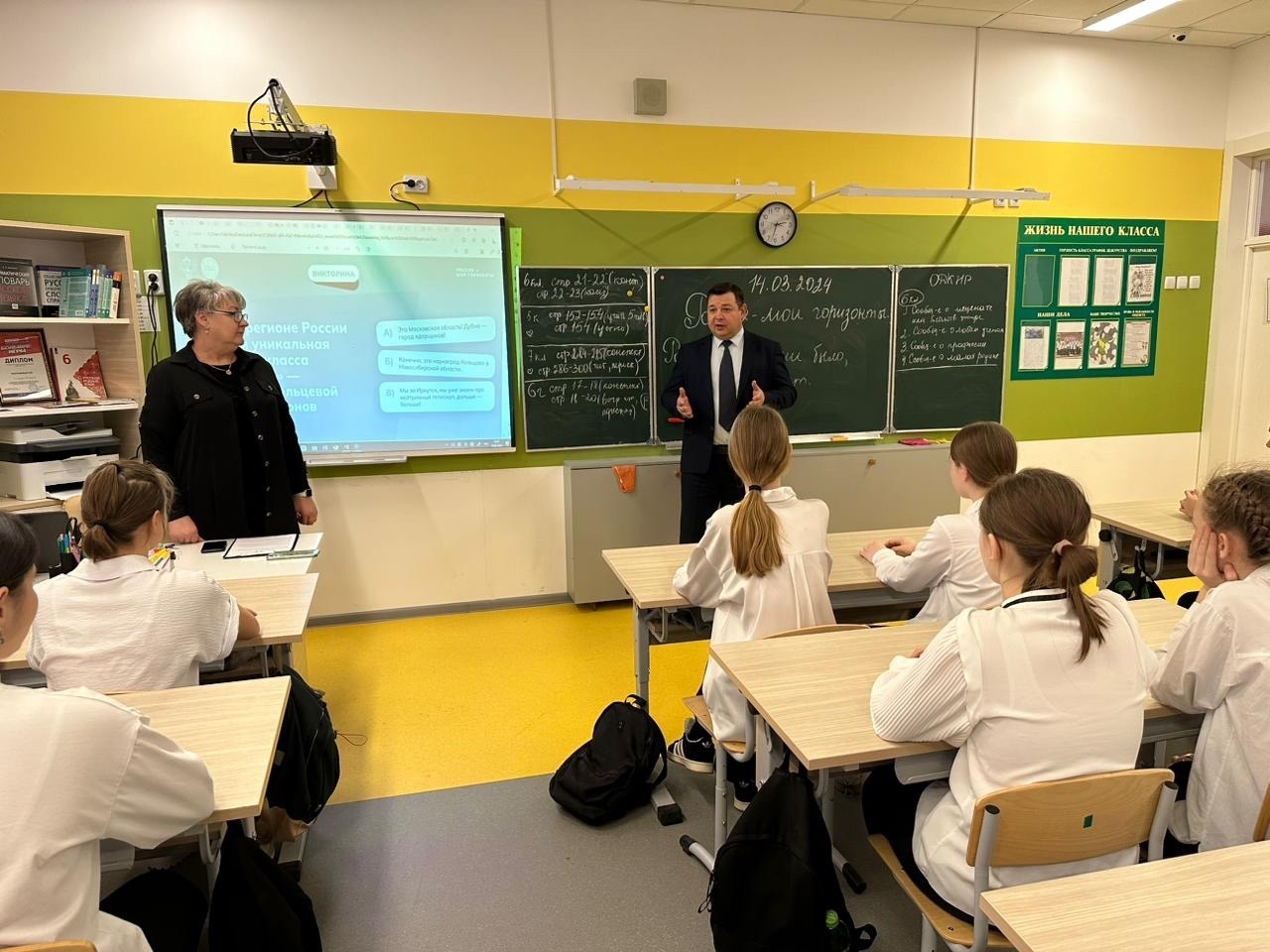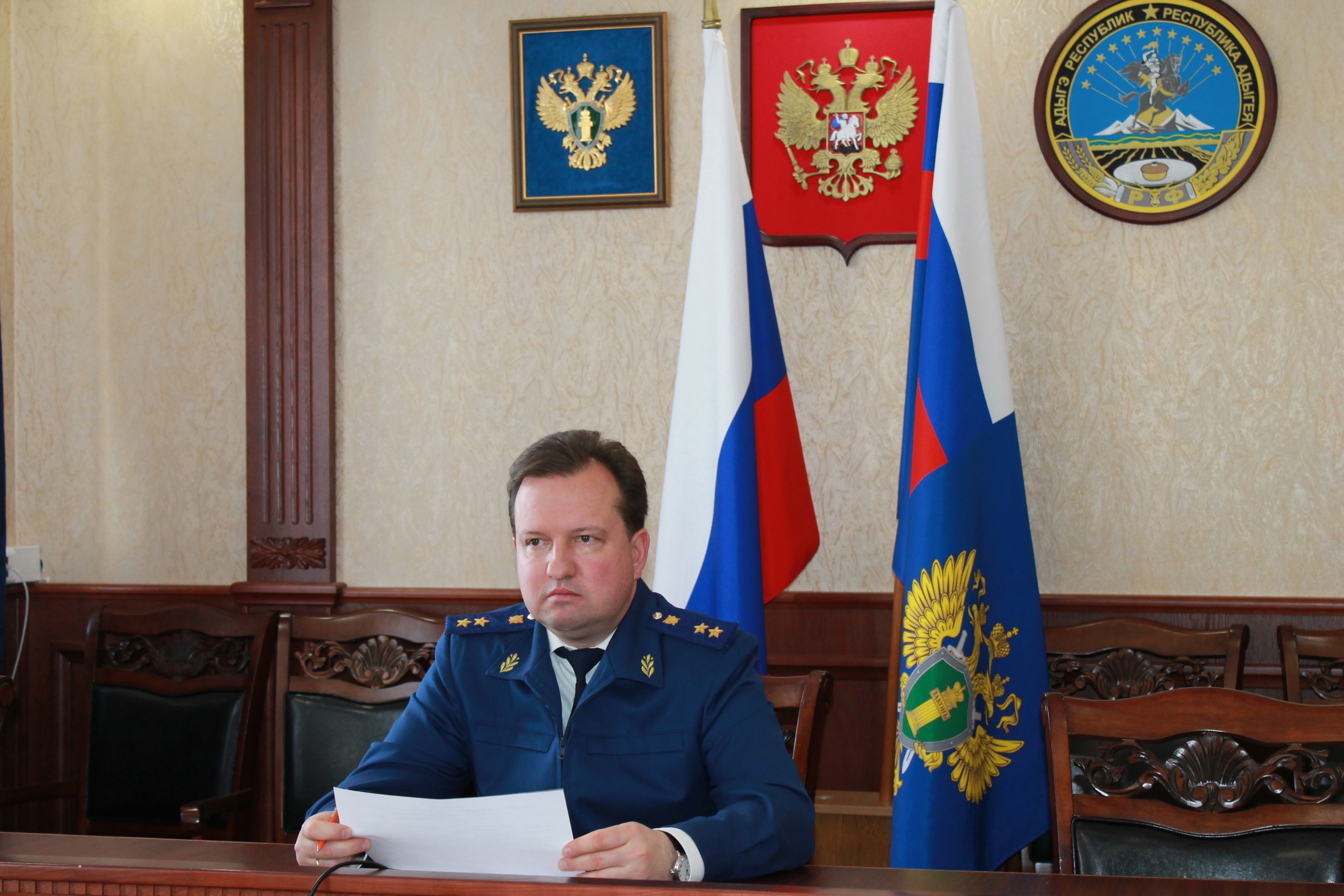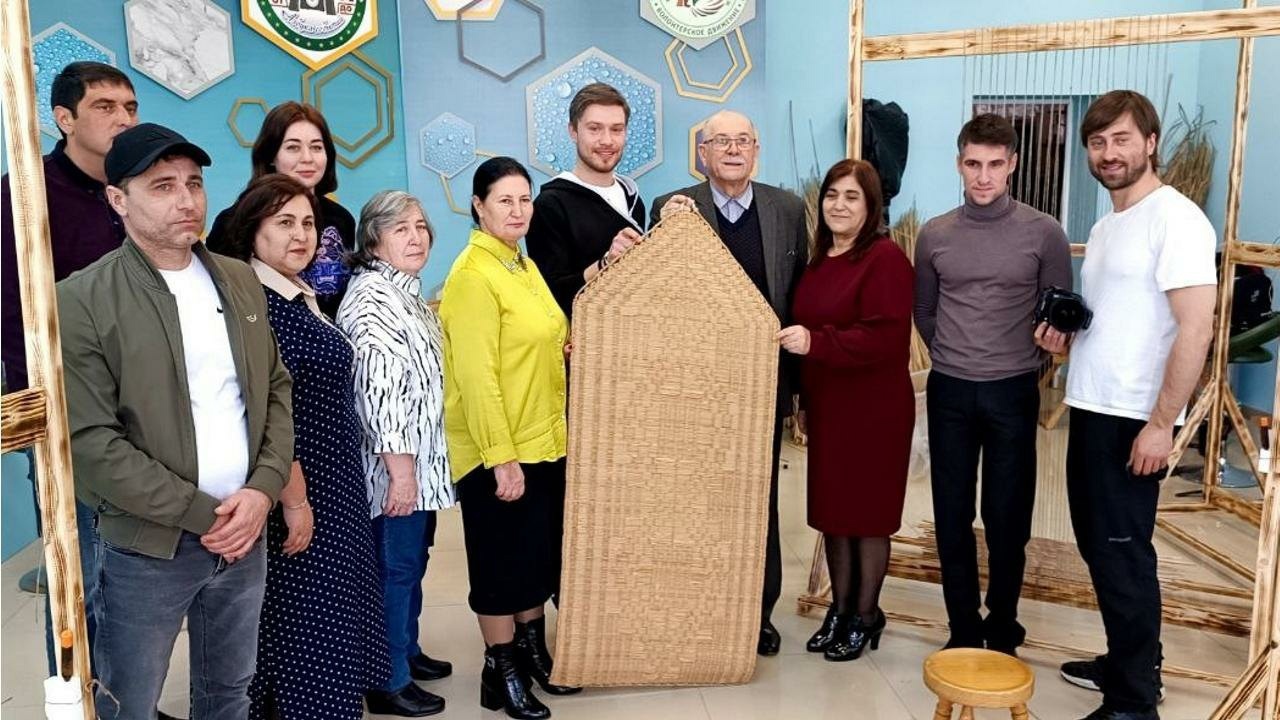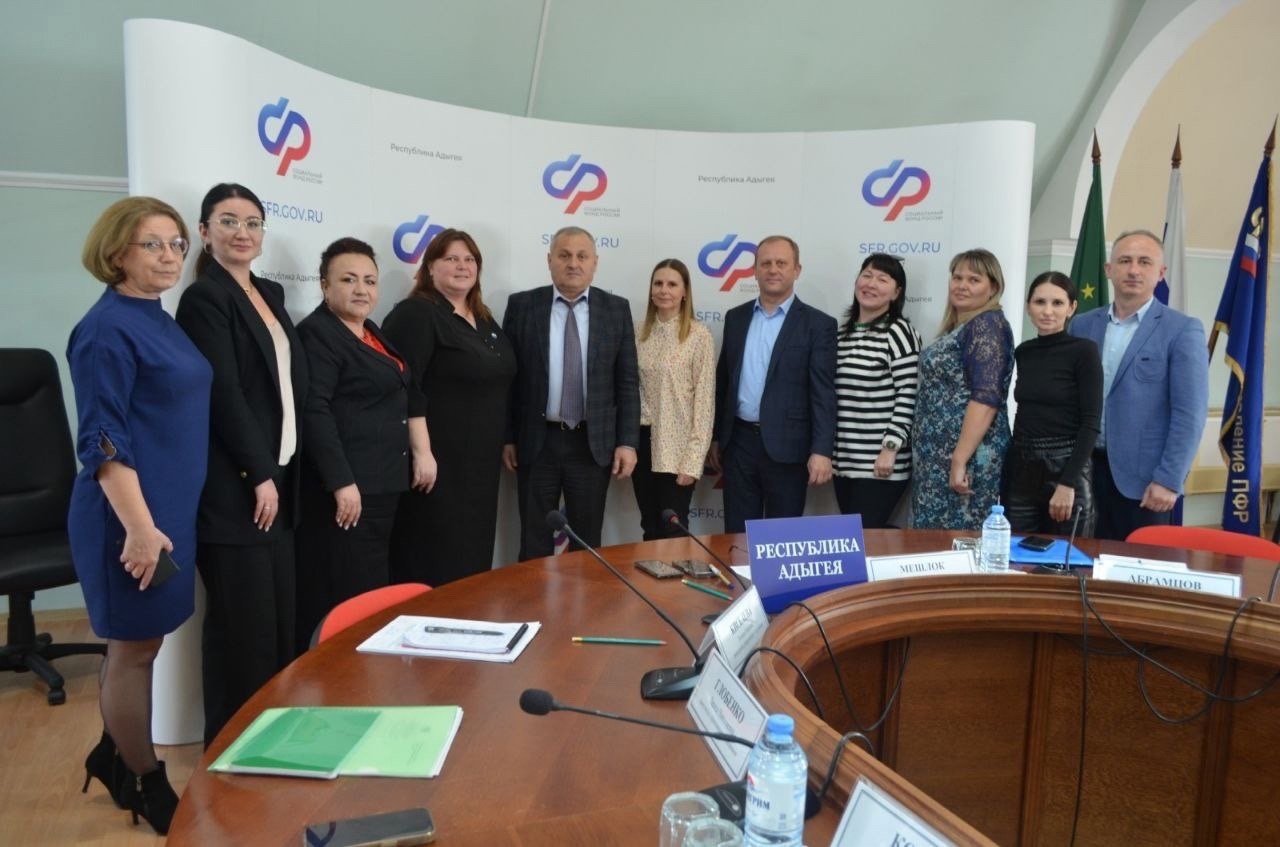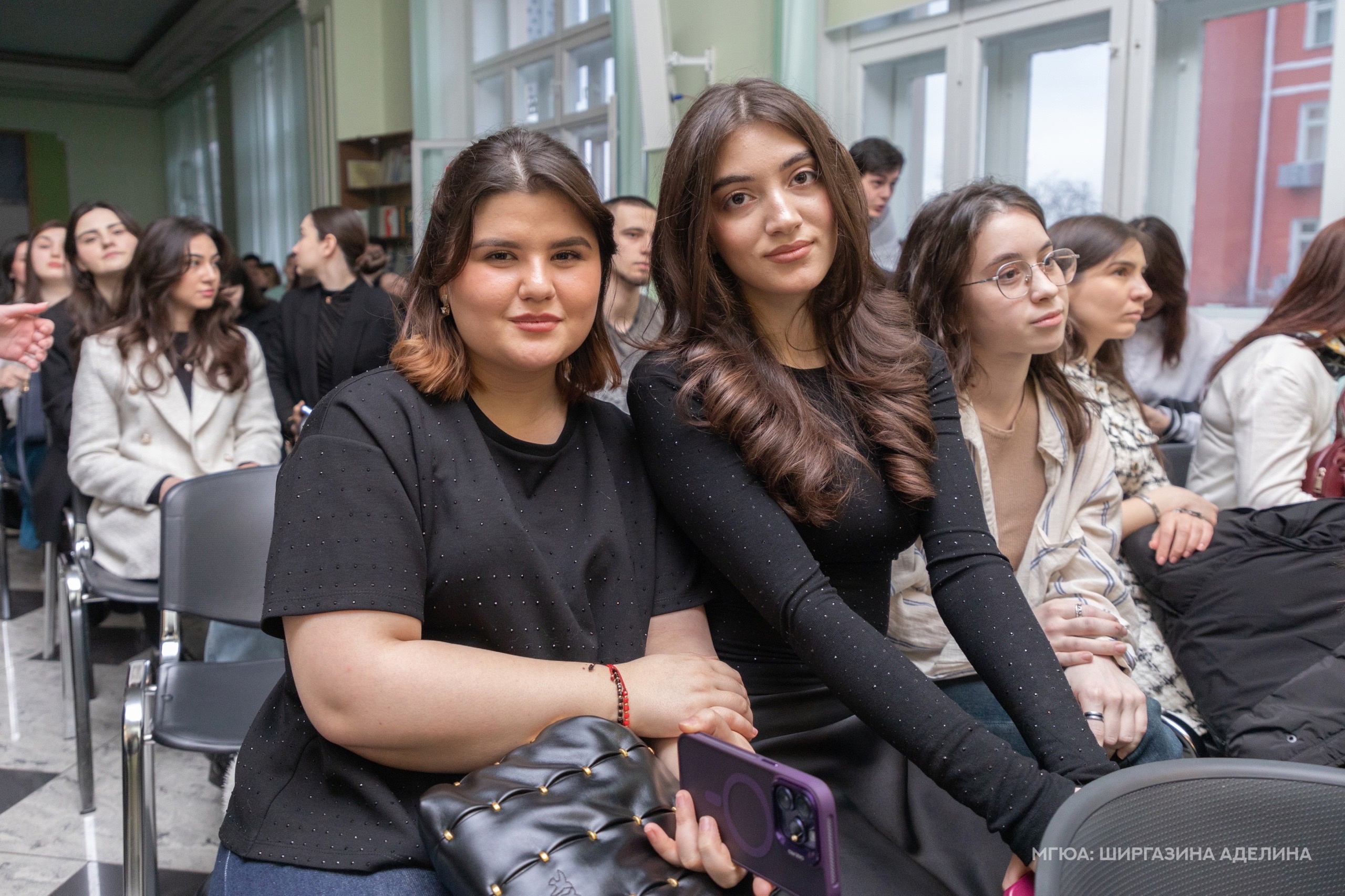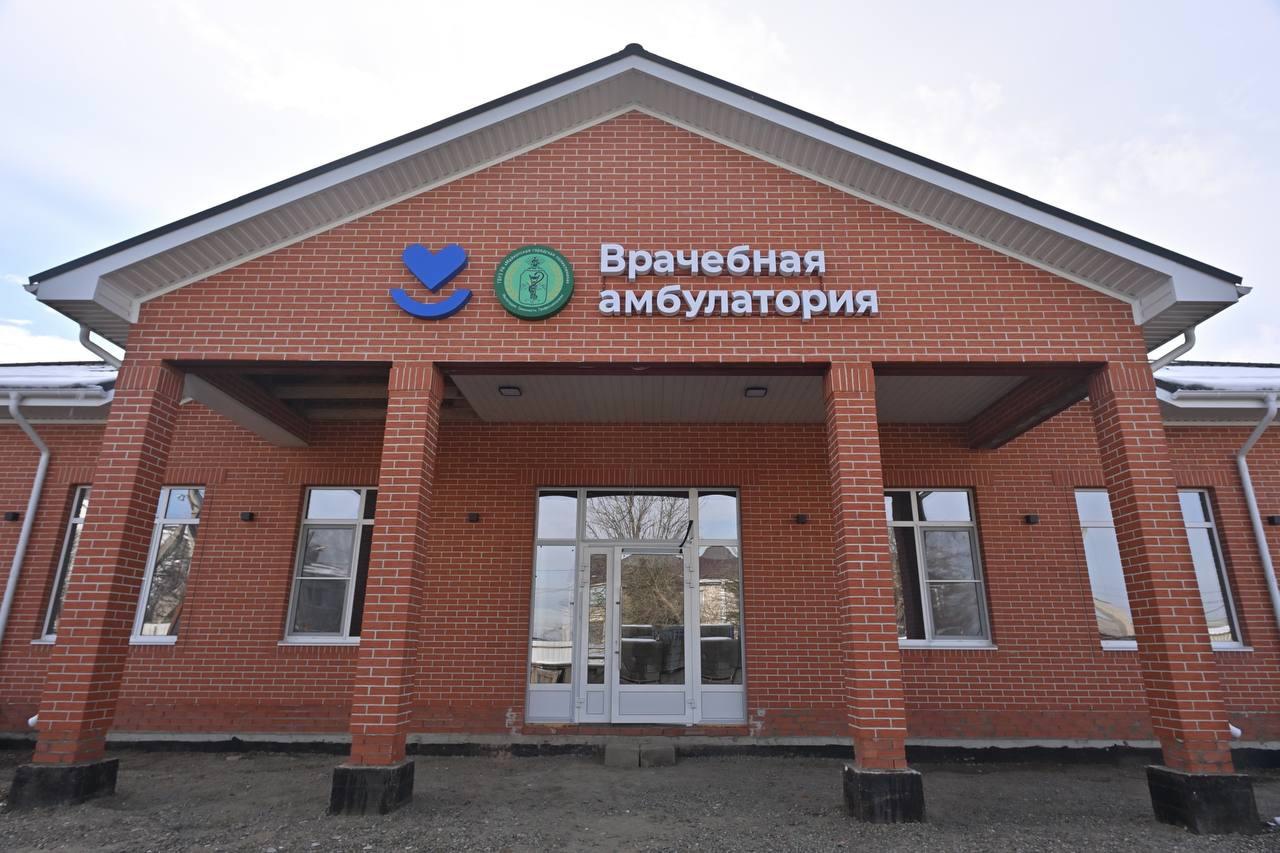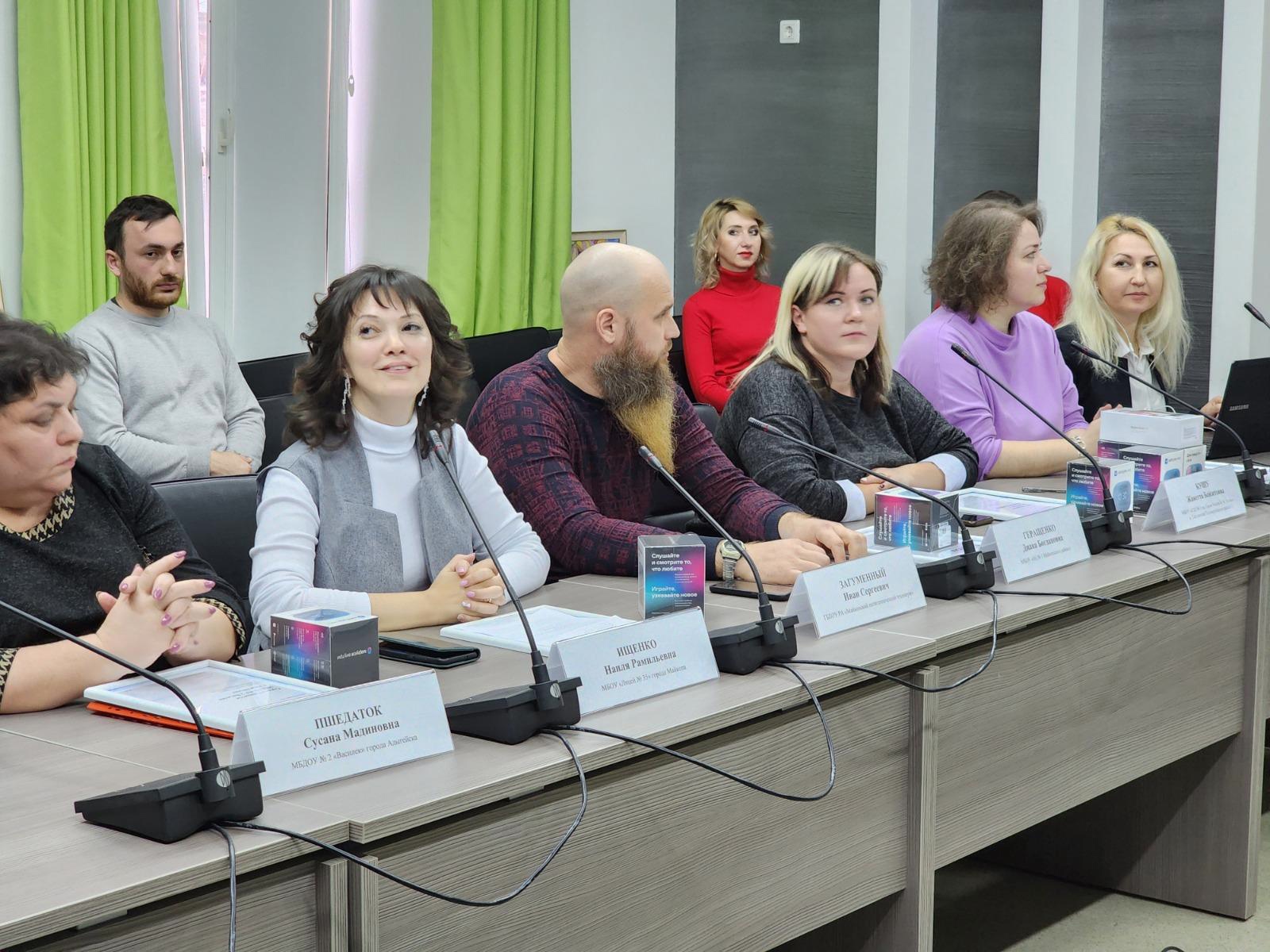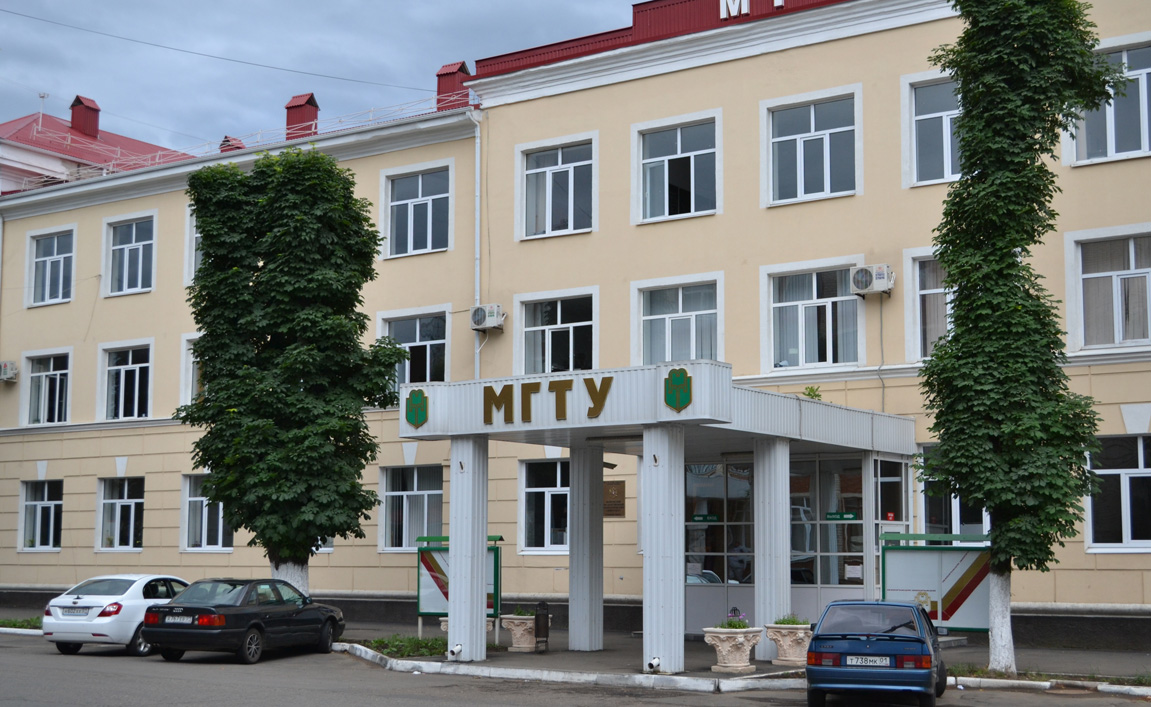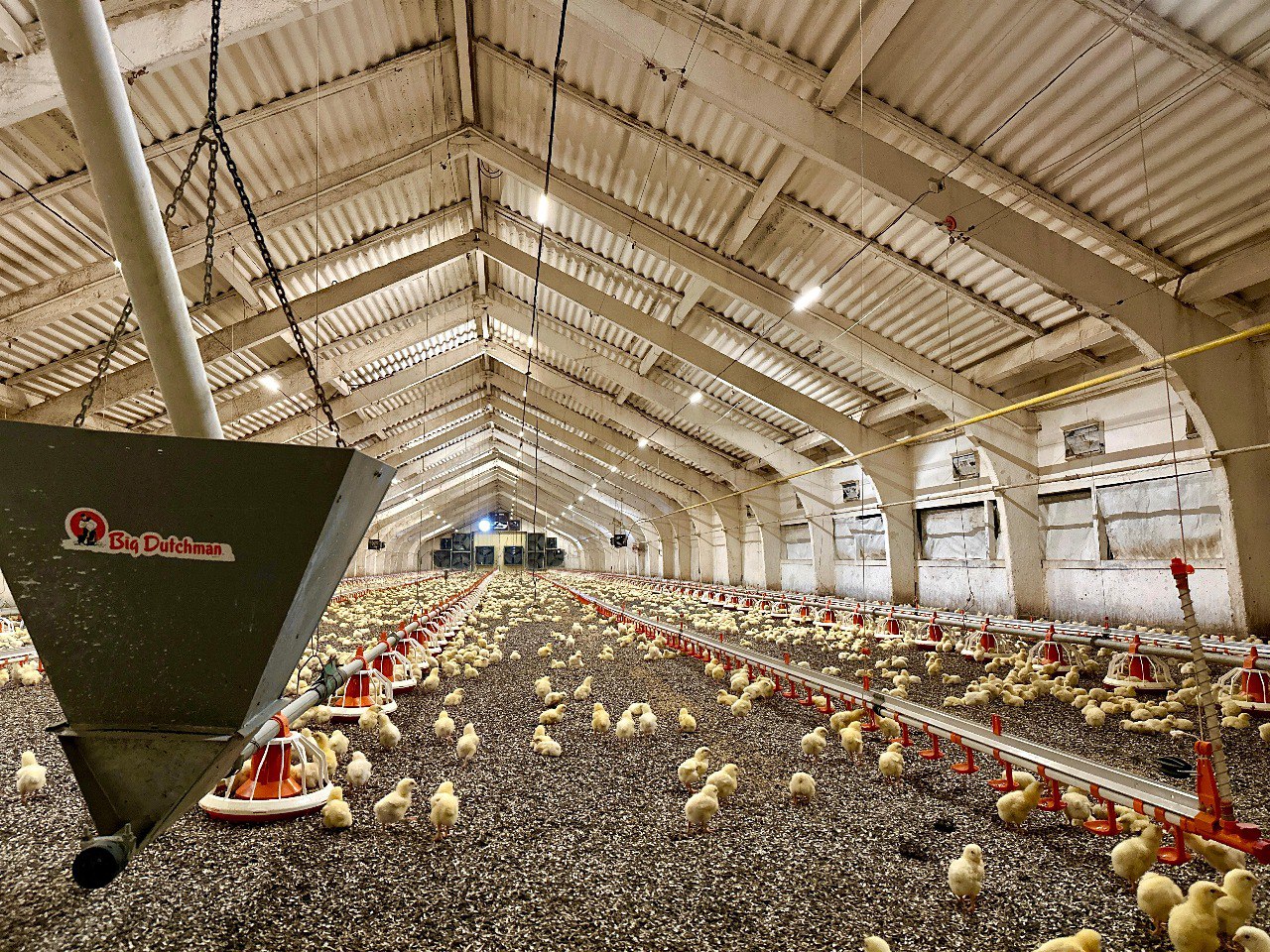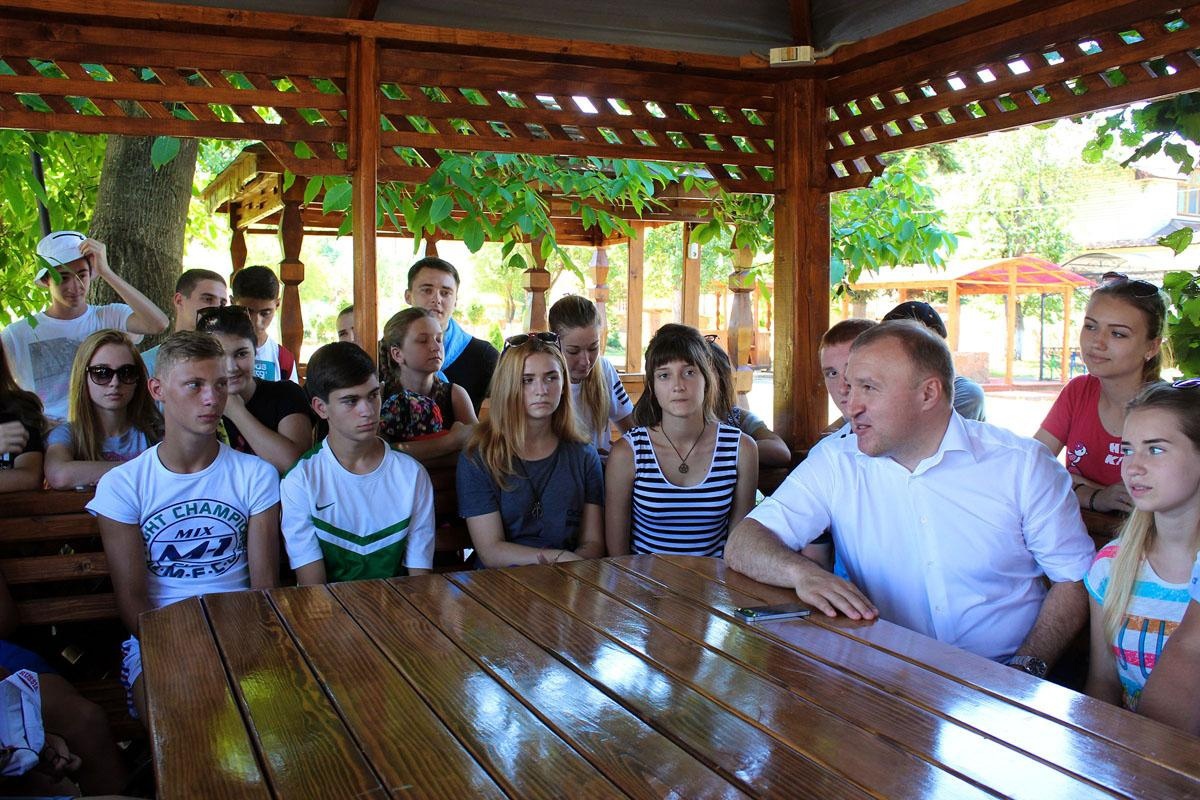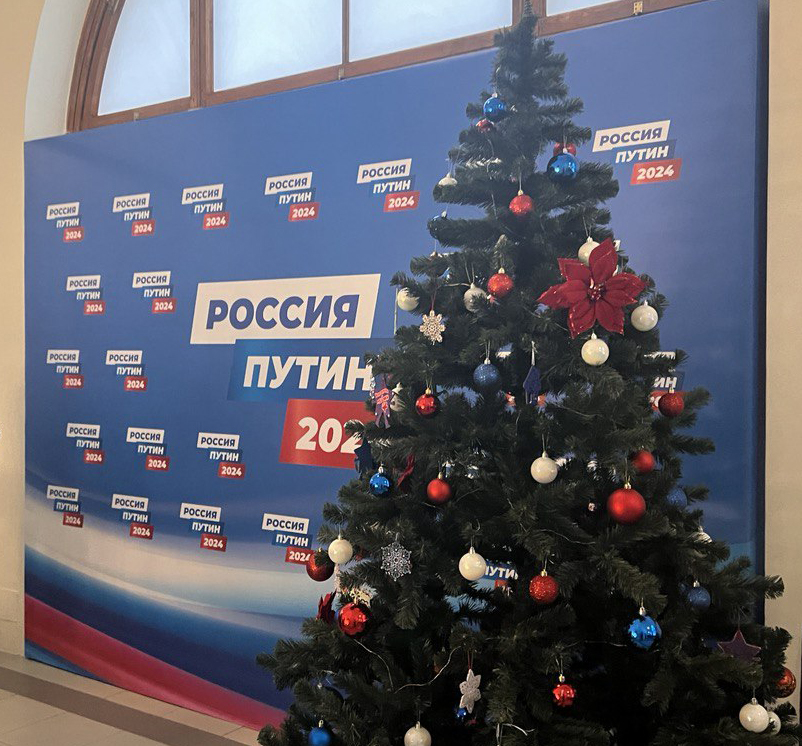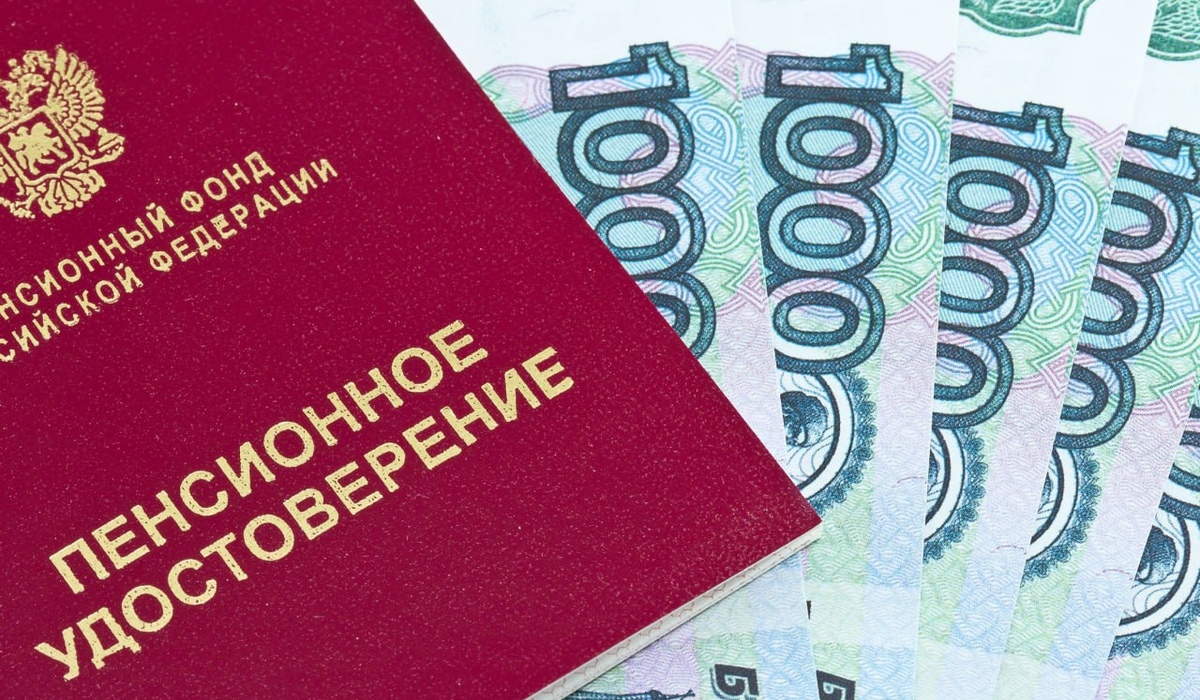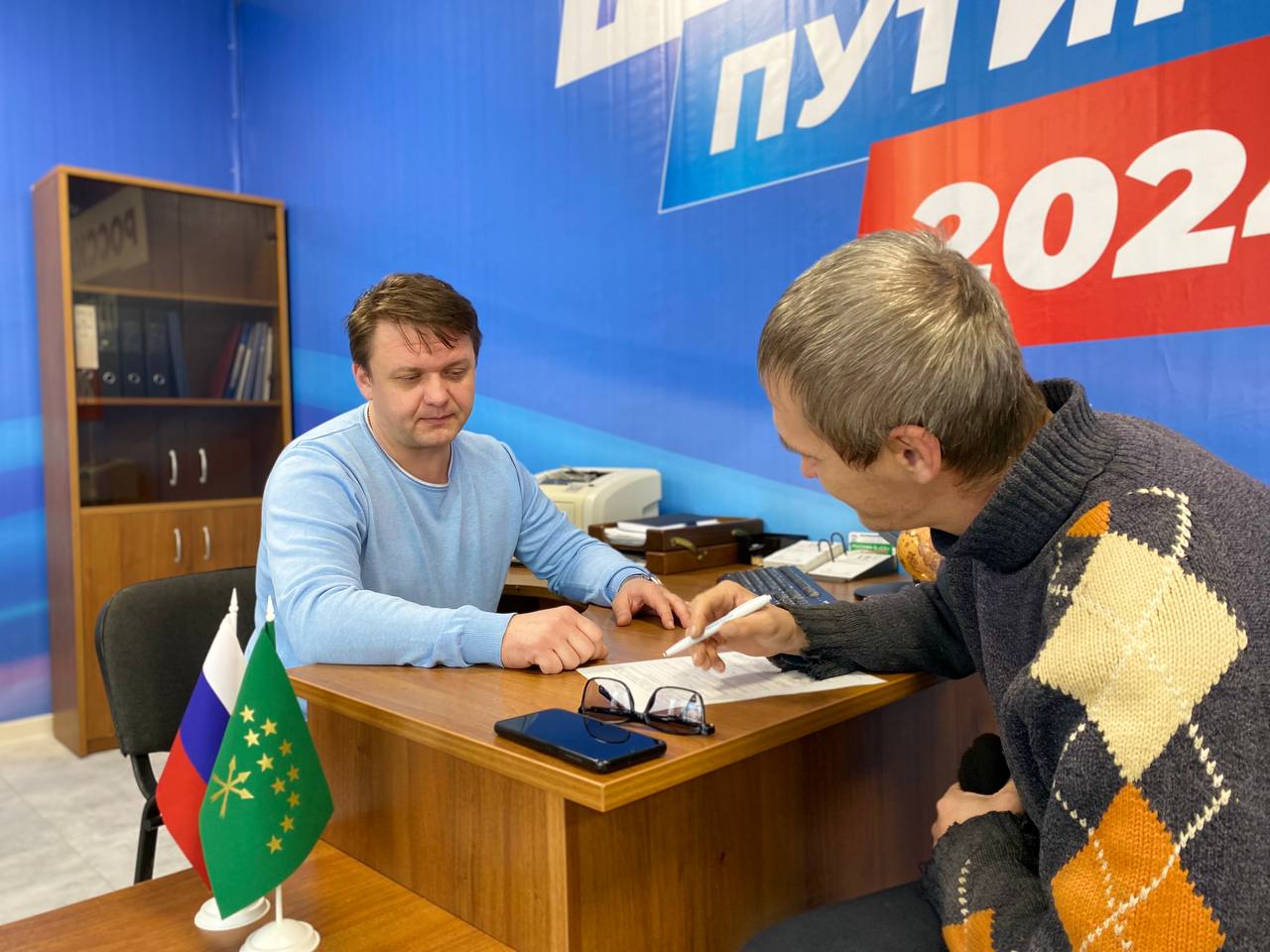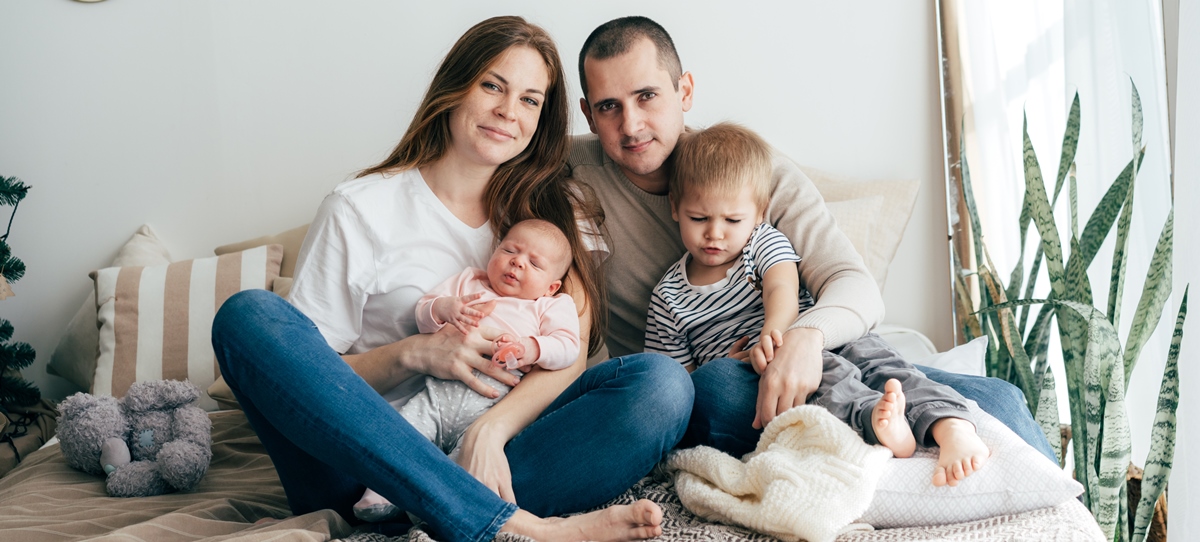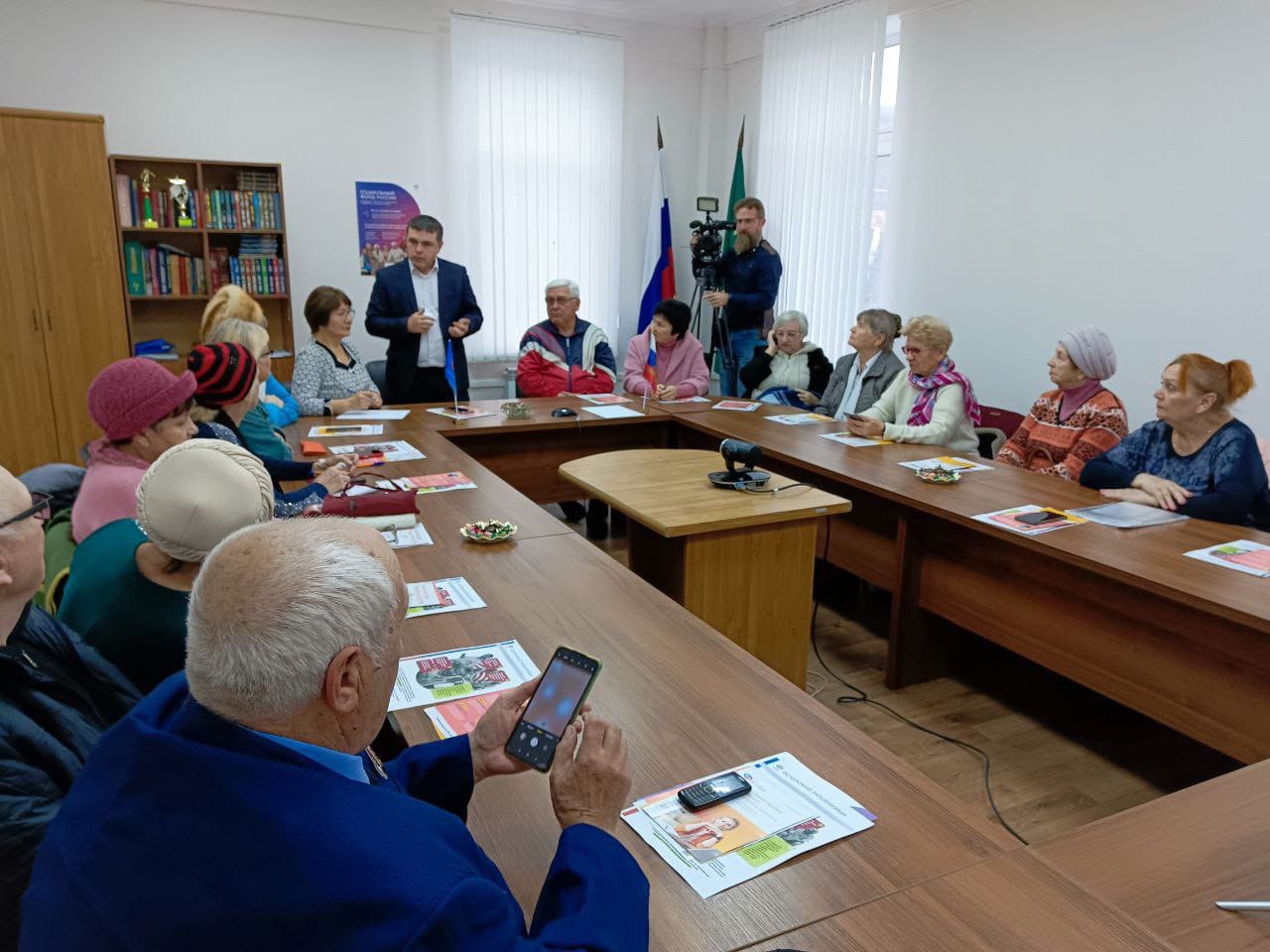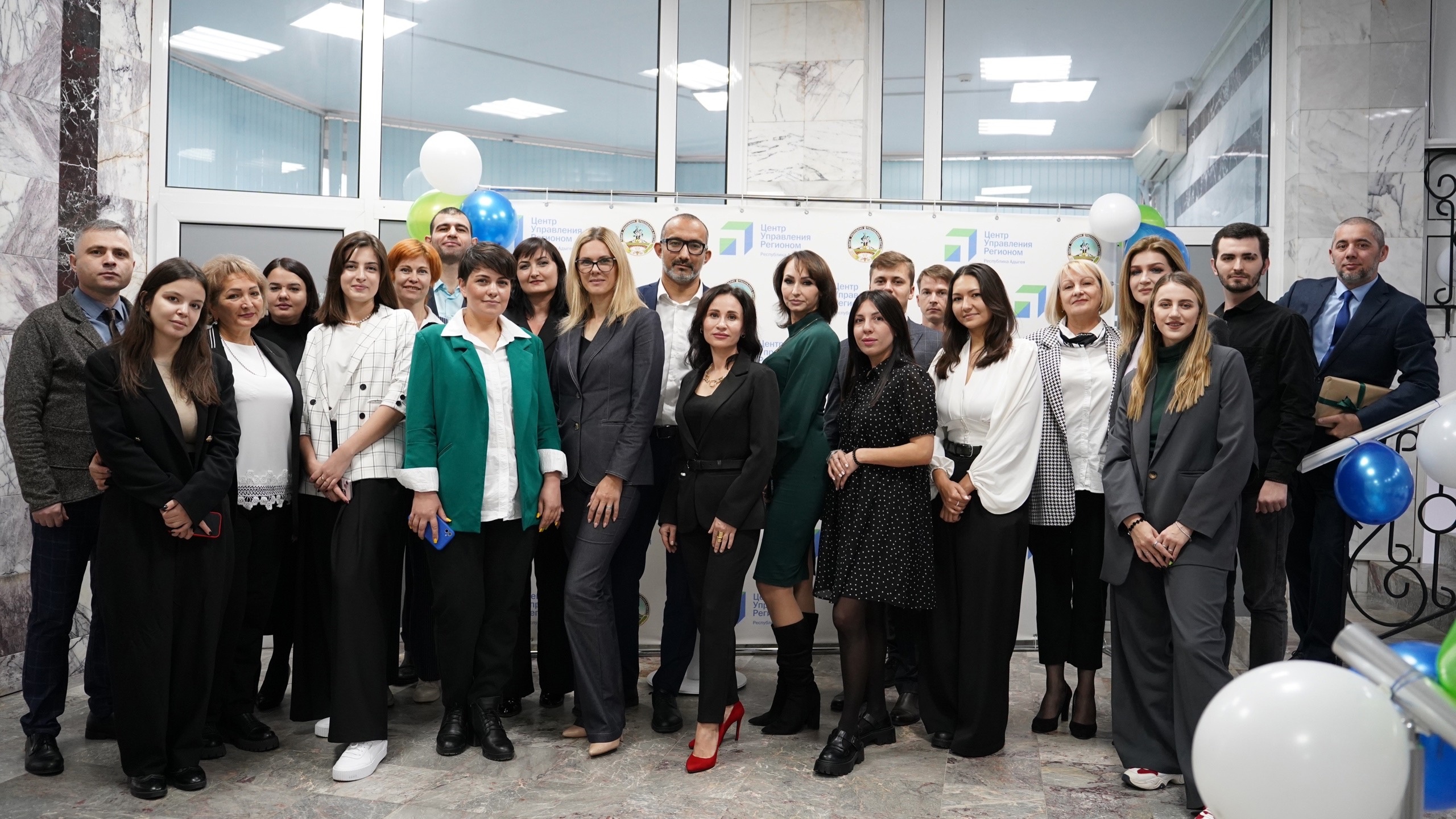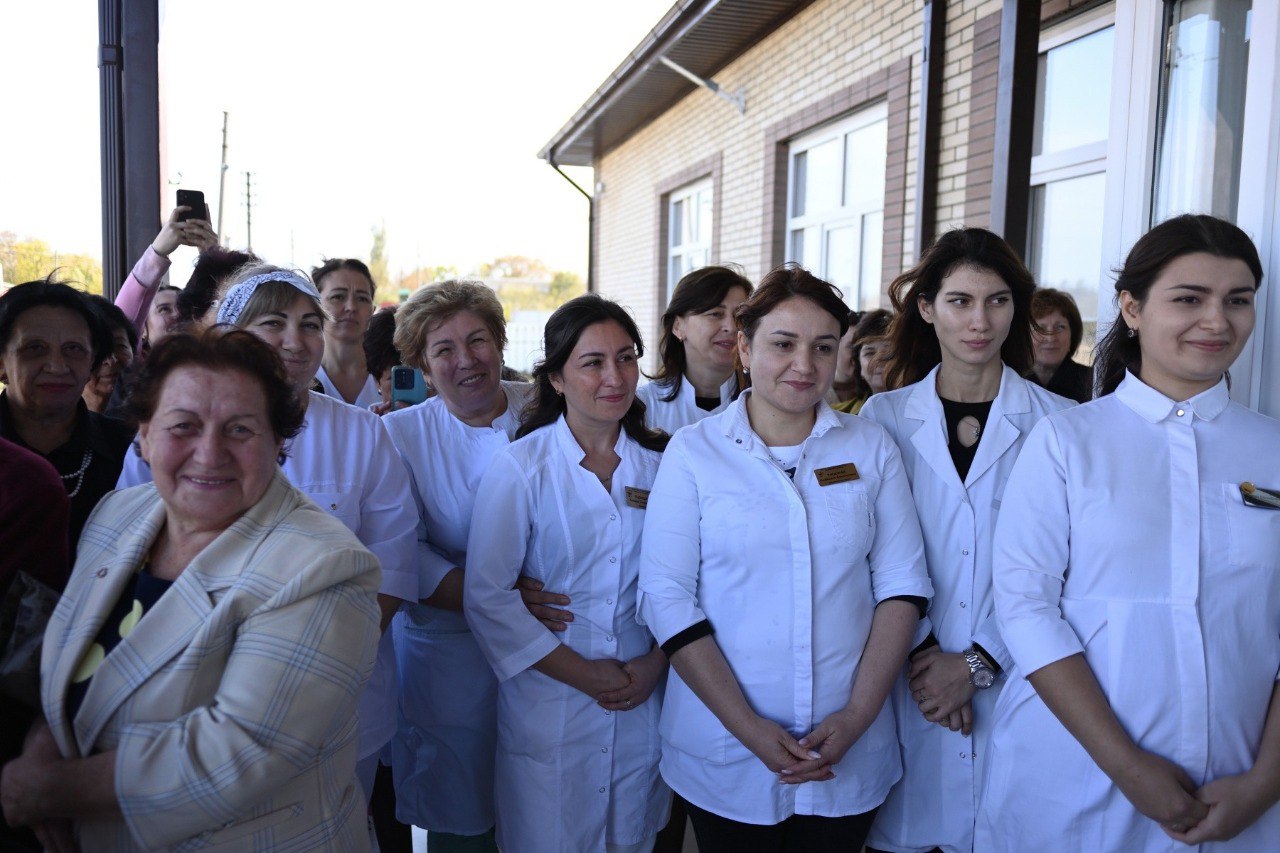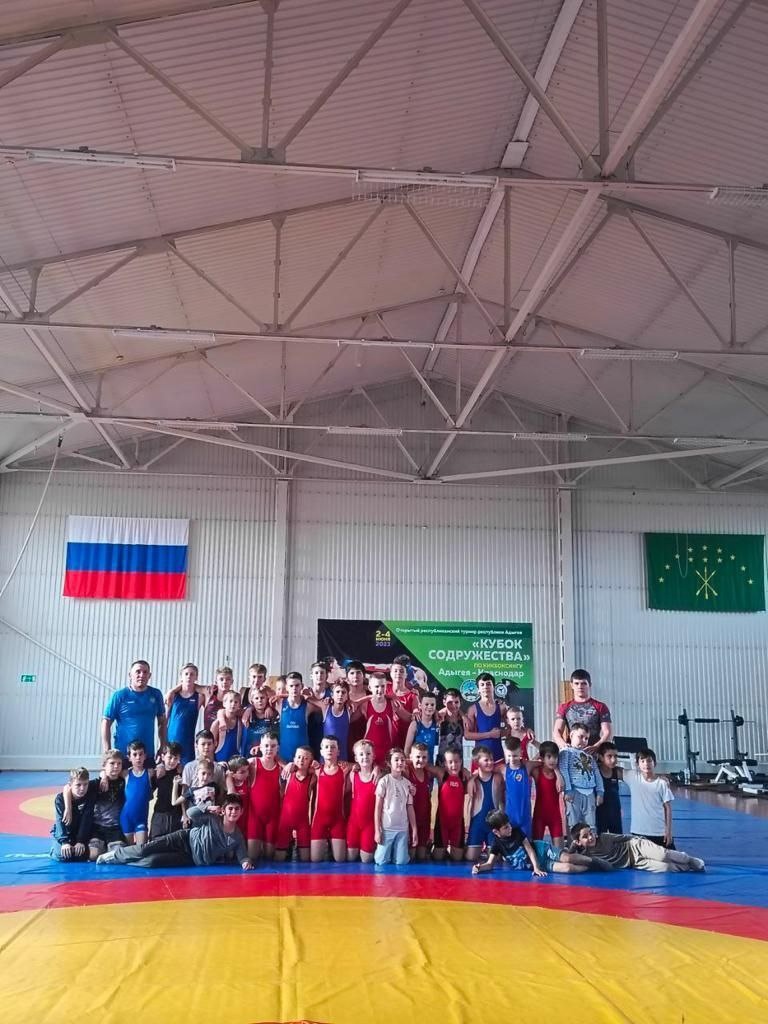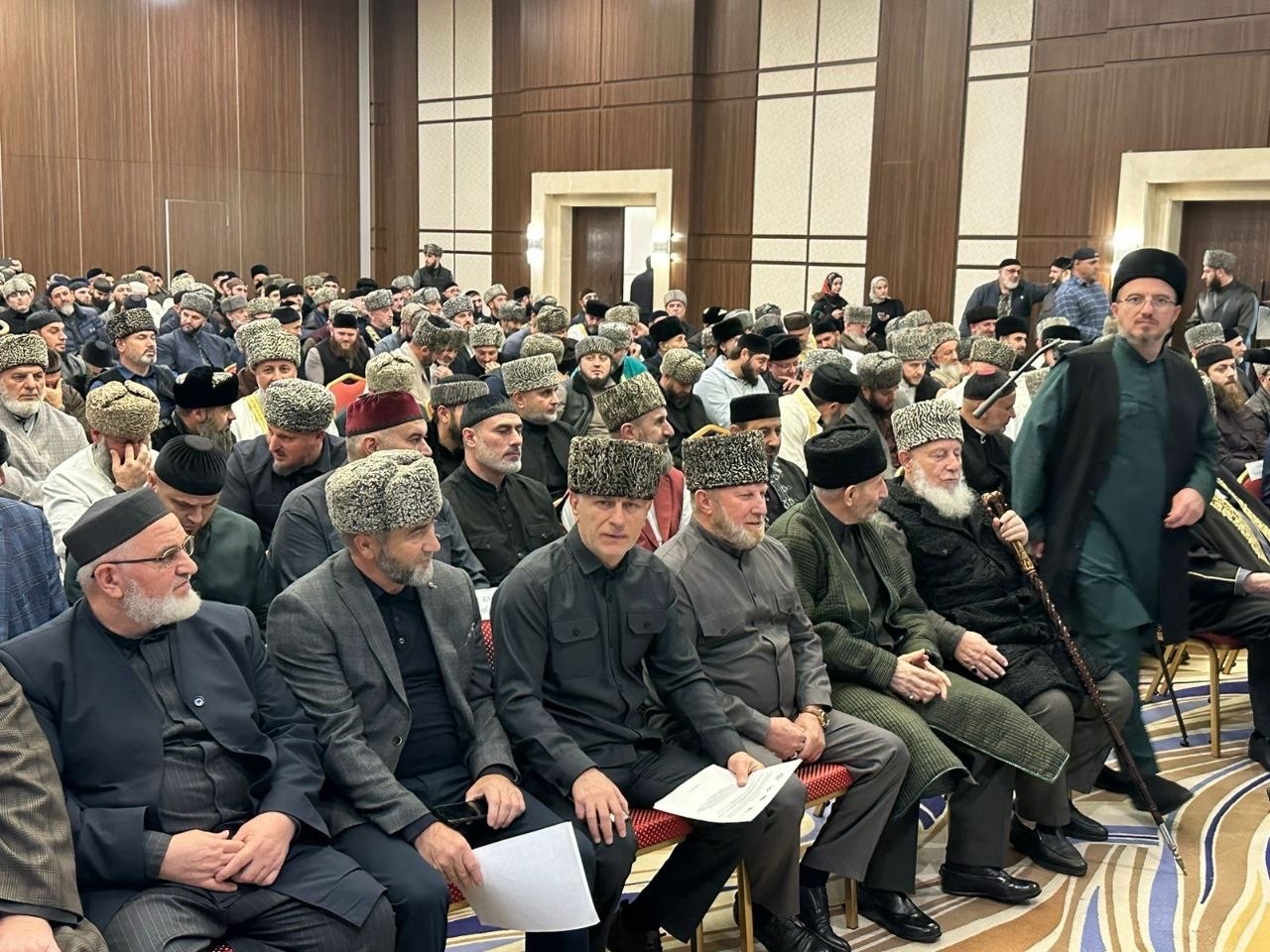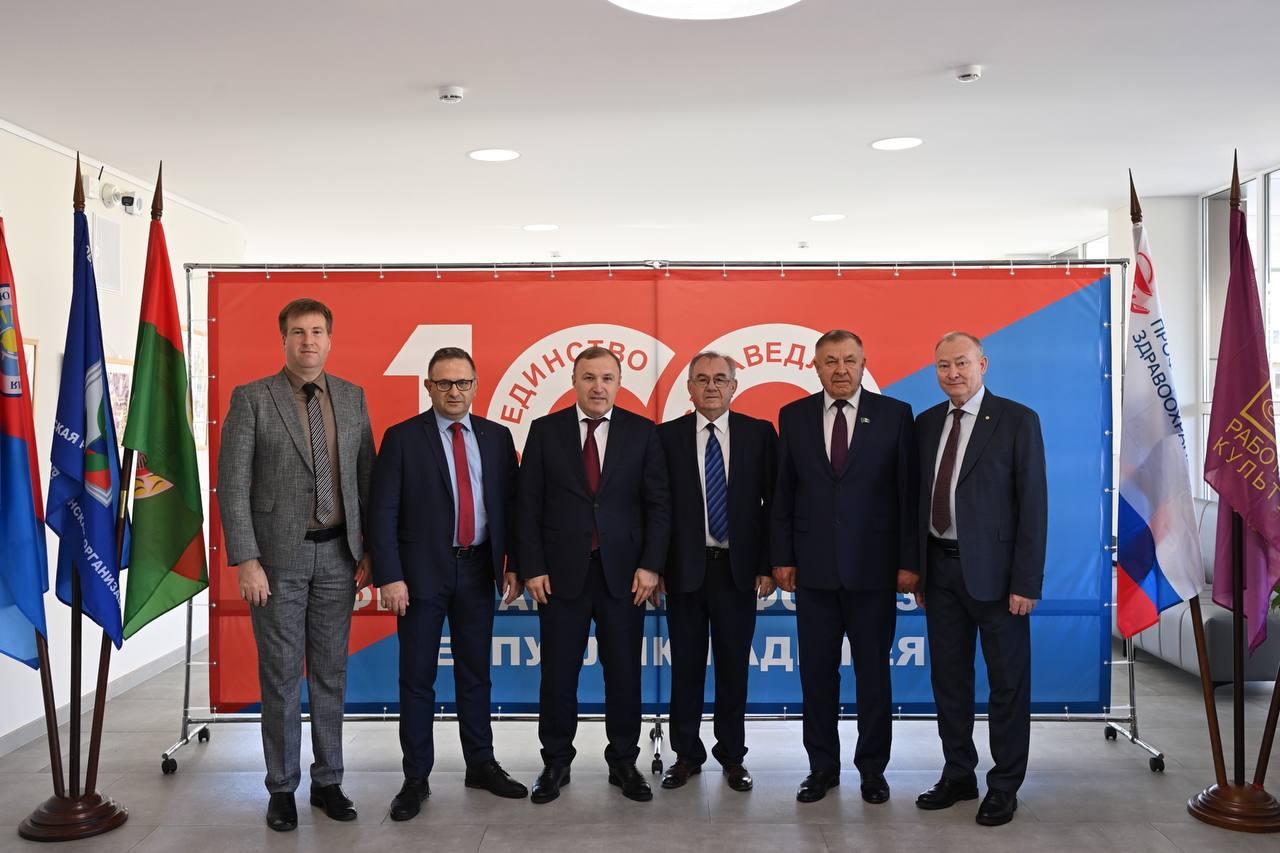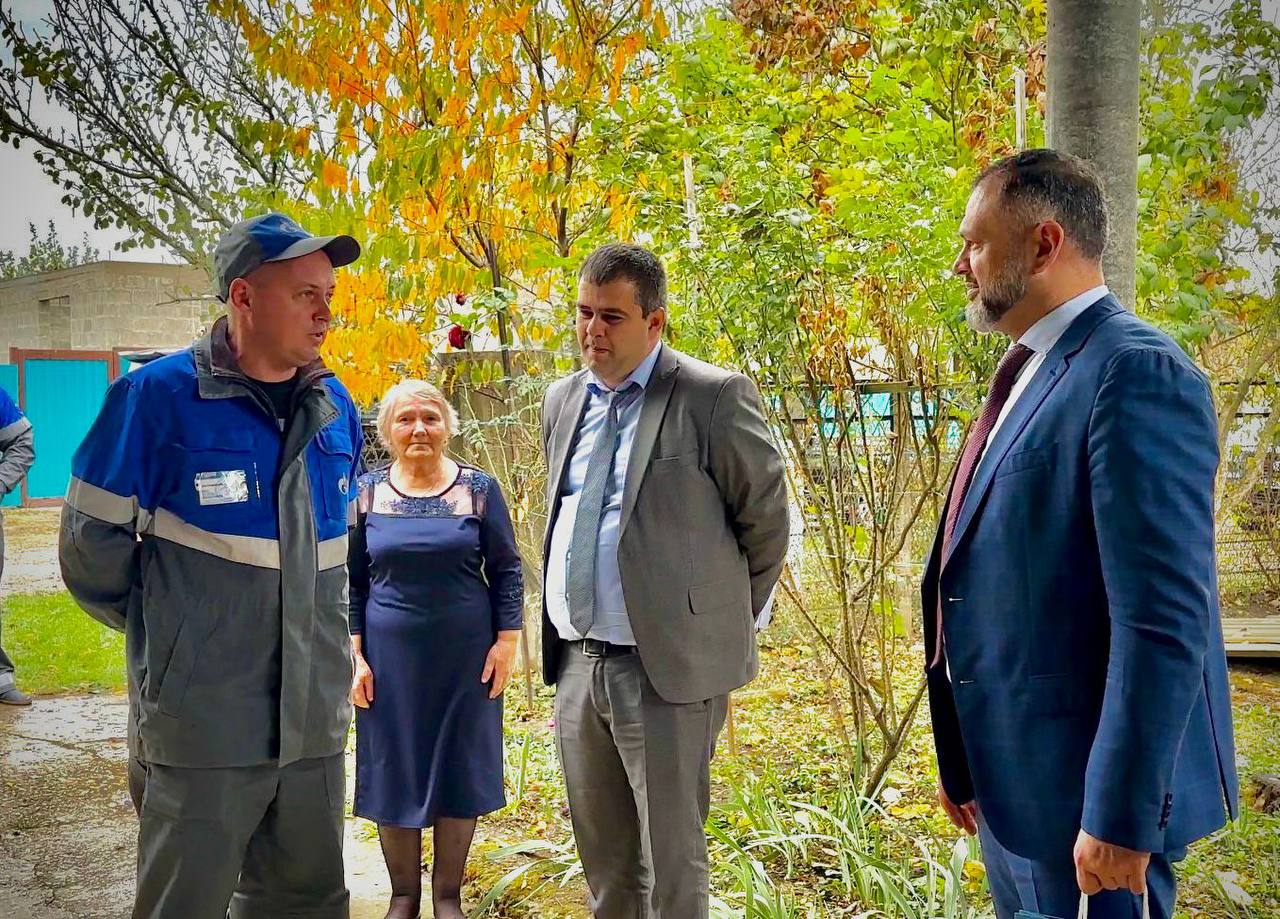THE NATIONAL CLOTHING OF THE ADYGHES (THE CIRCASSIANS)
Adyghe women clothing:
sleeve pendants with ornamental pattern.
Looking at old photos of Circassian women, festively dressed in the national Adyghe clothing – sae, we never cease to admire how bright and beautiful were sewn their sleeves or rather sleeve pendants, ashkhe balagh. Ashkhe thampe or large decorative over sleeves with Adyghe national ornaments, gold or silver embroidered, was decorated with galloon and looked like lacy wings of big birds.
In his interview about the trip to Japan, Adyghe folk master, Honored artist of the Republic of Adyghea Zamudin Guchev noted, comparing them with furisode - long and wide rectangular sleeves of kimono of Japanese noblewomen, that "this detail of Adyghe women clothing required a deeper studying" and gave "the advice to contemporary designers of Circassian national clothes to pay a special attention to this detail that distinguished the Adyghe women dress from the clothes of other peoples of the Caucasus." Considering ashkhe balagh (sleeve pendants) and ashkhe thampe (over sleeves) as a unique creation of Adyghe folk designers in the past with their mysterious meaning, he expressed a quite reasonable fear: "It isn’t to be lost!"(1).
Indeed, it isn’t to be lost! Contemporary designers of Adyghe national clothes pay little attention to this significant detail of sae, sometimes they replace it with sleeves made of light translucent fabrics. And sometimes they even completely abolish this mysterious detail of the dress, making a greater emphasis on silver or metal belt and breast accessories. Stylizing and simplifying sewing of Adyghe sae, contemporary designers forget, and perhaps don’t know about the role played by the decorative sleeves pendants or over sleeves with the national Adyghe ornament, gold embroidered, with its own special meaning which was read with patterns of its ornamental composition.
In ancient times, as it was noted in the 1840-s by the Russian researcher, later ethnographer and folklore researcher Khan-Guirey, "sleeve pendants were made of velvet of the most scarlet color and fastened to caftans with short sleeves. These over sleeves were gold and silver embroidered. However, well they were not in common use" (2).
Describing different types of national women dresses of the North Caucasus peoples, the researcher E. N. Studenetskaya outlined a "wrap dress of the first type (cherkeska cut) often had sleeves of "kimono" cut or sewn on a straight thread, without gusset, but the side seam passed by smooth curved line into the seam of sleeve (as in cotton endband). The sleeves had different lengths: above elbow, to wrist, with a frill sewn to short sleeve, with a slash at armpit or below elbow. Sometimes the sleeve is passed to cut long vane, rounded on the bottom edge. In the second half of XIX-th century, the last type was rare met, usually festive dresses had short sleeves to which it was attached on festive occasions a separate vane, decorated with embroidery or galloon. These types of sleeves met in dresses of the second type – wrap with cut at the waist" (3). Just this special vane is called sleeve pendants or in Adyghe language – ashkhe balag or ashkhe thampe.
Decorative sleeves or sleeve pendants were the decoration, sewn or fastened on clothes. These sleeve pendants date back to the middle of the XIX-th century, although sleeves with a slit on Adyghe women clothing have been known since the XV-th century (10). In the XIX-th century, over sleeves looked like a "gradually expanding vane of sleeve the length of which could reach the hem and which freely hung and was decorated with embroidery and galloons. Sometimes they made on narrow sleeve of dress above elbow a transverse strip of wide galloon (imitation of short sleeve) under which the vane was sewed "(10). Later, in the end of XIX-th – in beginning of XX-th century, the craftswomen began to make removable sleeve pendants which, despite the variety of cut of sae sleeves, kept ancient cut when the vane was with sleeve one whole. And such elegant detachable sleeves, as it was mentioned above, were worn only by ceremonial occasions.
It’s important to note the girl's hand should never have been left naked, unprotected by fabric. "Sleeve pendants, sleeve cuffs, over sleeves illustrate identity of the Adyghe women clothing, long pendants are more typical for a girl's costume or a costume of a noble woman whose hands were protected from undesirable contacts, and whose sacred purity was not put in any danger" (4). It should be noted the sleeve pendants could be fastened on the forearm or elbow with lace sewn into their top part where it was most often stitched a wide galloon. And sleeve cuffs were attached with the same way on wrist.
In fact, decorative sleeves with gold embroidery and galloons were mostly only on festive women dresses of the Circassians women. At the same time, it was not allowed the ornament on sleeves pendants was too large and weighted silhouette of dress. This was presented by the contemporary researcher, candidate of historical sciences Zarema Tseeva: "The most striking emphasis on the festive women cloth was gold embroidery on decorative sleeves pendants of sae. At the same time, rather catchy, but laconic ornament was located in the central part of over sleeves. In any case, decorative elements of costume were not to overload dress, to look pretentious or too big" (5).
For patterns on over sleeves, it was believed "embroidered with more complex pattern over sleeves that preserved in the greatest purity ancient types of ornaments are differed by a particular beauty. The composition of pattern of over sleeves presented a strictly symmetrical image the central part of which often consisted geometric shapes (rhombus or triangle) which were complemented with zoomorphic and vegetable elements and motives (tendrils in horn style, leaves and three-leafed figures). These motives and elements of ornament were joined together with thin, elegant lines of braid laces, forming a holistic decorative image, beautifully inscribed in figure of pendant " (7). In addition, in the article "The Adyghe pattern" (1940), researcher E. M. Schilling distinguished among ornaments embroidered on over sleeves elements of Adyghe tamgas, pattern of tree of life and schematic representation of human figure (10).
The diversity of signs on sleeve pendants and their semiotic meaning were detailed by Felix Nakov in his monograph "Tkhype. Adyghe (Circassian) signs system". Director of the National museum of Kabardino-Balkaria, candidate of historical sciences Felix Nakov believes the central part of all the signs on over sleeves was a rhombus around which there were other elements (8). In his opinion, "it’s logical to assume the heart can be perceived as a reduced symbol of female deity or foremother. Most probably, representation on the Adyghe over sleeves is a stylized image of a female figure" (8). And "if these representations are broken down into component parts, there are obtained five main elements which can be interpreted as follows: image of head, image of hands, image of breast, image of legs and image of the birth (childbirth) " (8). The researcher finds it noteworthy that "these elements are steadily repeated in a particular style on almost all authentic over sleeves, and images on over sleeves of second and fourth elements - hands and legs - have with all their diversity, as a rule, an axial symmetry relative to vertical axis of the sign; while the method of filling symmetrical elements of gold embroidery is different" (8).
Relating ornamental compositions on sleeve pendants with context of the Nart epic poetry, Felix Nakov interprets combinations of pattern elements with image of a female deity, focusing on the birth (childbirth) and breast with mother's milk, a symbol of kinship, connection and unbreakable bonds. He sees such deity in the Neolithic fertility goddess from ?atalh?y?k, contour representation of breast and abdomen of which is the rhombus that is already known with reduced and stylized image of Une-guasha (hostess of house) and with sign patterns-thypha of sleeve pendants (8). "Fertility", "childbirth", "fetus" compose the same semiotic paradigm which the researcher considers similar to "cognitive and mental concept sphere of ?atalh?y?k", that allows him to argue "signs on Adyghe sleeve pendants arise inside and may have as their prototype shapes and images very close to above mentioned fertility goddess" (8).
Focusing on various stylization forms of image of head, Felix Nakov points out, first, the shape of triangle, second, the form of three-leafed figure and, third, the shape of horns. According to him, the horns image on over sleeves was "a part of the cloth of older woman-matriarch in the family where horns (in the female version- cow horns) are associated with motherhood, fertility, prosperity and have a sacral subtext" (8). The fourth form is a solar disk which also represents a symbol of divinity, sacredness and symbolizes source of life, fertility, light. "The stylization of head as a multi-leafed figure imitates the sun rays - a kind of nimbus" (8). Thus, four elements denoting hands and legs on over sleeves are twisted in spirals as follows: upper extremities - down and bottom extremities – up (8).
Despite the detailed presentation of the relations of ornamental composition on sleeves and sleeves pendants with goddess of fertility, made by Felix Nakov, it’s worth to study its main elements in more details and separately. Always symmetrical ornamentation of ashkha thampe includes such patterns as 1) rhombus, 2) triangle, 3) three- or four-leafed ornaments, 4) horn style patterns, 5) circles in form of solar sphere, 6) vegetable patterns in form of tree leaves (oak, maple) and flower buds, 7) tendrils of grapes, stars and hearts. Basing on the Adyghe ornamental typology presented by Nuriet Teuchezh in the article "The Adyghe ornament in gold embroidery art" (9), all these ornaments belonged to it and had their semiotic significance. So, for example,
- rhombus or rhomboid figures imitate maps or designate four cardinal points;
- three-leafed figure could designate a trefoil, combination of three worlds: water, earth, sky; a sacred number “3”;
- horn style correlated with head of sheep, deer, bull which symbolized the cult of prosperity;
- disc-shaped figures or so-called circles: if they were embroidered with gold thread, they represented the sun, if with silver thread – the moon, and all streamlined figures had the meaning of eternal life;
- vegetable ornament more closely is connected with religious representations of the Adyghes; they considered the happiness in all fruit trees, as well as in linden, ash, oak, hawthorn; they also symbolized the belief in healing of various diseases, incantations, spells and evil eye; the Adyghe saw the magical power in images of flowers, herbs, seeds, roots;
- tendrils of grapevine, leaves, stars and hearts are figures of more recent origin and less stylized (9).
According to these meanings of ornaments that adorned over sleeves, it’s to conclude their function was not only decorative, but also protective, defending their mistresses from evil eye or evil spirits. In addition, the over sleeves compositions could represent harmony of universe, harmony of four points of the world, eternal life and prosperity. And this interpretation indicates the partly religious character of ornamental compositions of sleeve pendants. However, as master of folk arts and crafts from Adyghea Larisa Gumova noted in one of her interviews, patterned compositions on over sleeves were both readable and unreadable (12). However, the use of ornaments, represented above, still gave and are giving them a protective function, function of the sacred amulet.
Hiding under their gold and silver ornaments symbols of fertility, light, prosperity and harmony, beautiful sleeves pendants often determined the social status of their owners. Only representatives of feudal elite could wear them as casual clothing. In this case, "so longer were sleeve pendants, richer were considered their owners, and their length was varied and could reach the floor level" (10). In addition, ornamental compositions on over sleeves of the Circassians were not repeated from dress to dress and carried their unique meaning, characterizing their owners and determining their destination. Today, the creation of costumes for artists of folk dance ensembles has contributed to their replication.
The complexity of ornamental composition on over sleeves caused that their production required a painstaking work which took a lot of time. Therefore, "they were highly valued and transferred from mother to daughter, from grandmother to granddaughter, and they were preserved for a long time, overcoming the dress itself" (10).
For matters, ways and sizes of over sleeves, they are presented by descriptions of some of them in a unique edition "Adyghe Cultural Objects in the Collection of the Russian Museum of Ethnography" at preparation of which folk master of Kabardino-Balkaria Vyacheslav Mastafov participated. All described over sleeves date back to the end of XIX-th century – beginning of XX-th century. They were manufactured of fabrics such as brocade, wool, silk, cotton (4) of which brocade and silk were expensive and few available materials.
Mainly, the way of gold embroidery of ornamental compositions elements on them is "dyshe idag" or "in-fastening", which was" the most valuable and, of course, the oldest sewing way" (11). The peculiarity of this type of gold embroidery which was also called applicative, consists in that "embroidering gold or silver threads were laid across, attaching with thinnest silk on ornamental field borders with stitches from below to covering" (11), after embroidery, the finished ornament was cut and sewed on fabric. This sewing required jewelry accuracy and the craftswoman worked for about a month to embroider a circle of 5-6 cm in size (11). Connecting ornaments in compositions, there were used shaga – galloon and uaga – lace. At the same time, the galloon was sewn on all edge of over sleeves.
For sizes and shapes of sleeve pendants, the descriptions represent as follows: "a large oval cloth (with or without a trumpet-shaped end) for putting on a hand above elbow" (4). However, there were over sleeves in long and rectangular shape that could be explained by several reasons, one of which is a simple lack of fabrics which were expensive for the Circassians. However, craftswomen of the past did not follow strict rules and sometimes they freely varied form of sleeve pendants with the aim to beautify it in special way and to distinguish their owner.
Thus, elegant, embroidered with gold and silver patterns over sleeves were not just decorations on dresses of their owners from noble Adyghe families. They served as a sacred ancestral amulet, transferred from generation to generation, and protected their beautiful owners as a symbol of the source of life, fertility and light, prosperity and harmony of the whole world, foreshadowing them happiness, fertility and prosperity. And let the embroidered ornamental compositions such sacred parts of the national dress of the Circassian women, as sleeve pendants, demanded a long time and great skills of masters, but their value and importance were undeniable and recognized by the Circassians in the past. There is no doubt today that such over sleeves sewn with galloons, with national Adyghe ornament, embroidered with gold or silver threads, will decorate contemporary Circassian girls and women who don’t neglect national clothes, and not only decorate, but also serve as a protective talisman giving them the power of a rich and fruitful life, foreshadowing them and their families prosperity and well-being.
Surely, this unique decorative talisman, inherent only to the national dress of the Circassian women isn’t to be lost!
References:
1. Interview with Zamudin Guchev /http://natpress.net/index.php?newsid=17729
2. Khan-Guirey. Notes on Circassia. Publishing house "Elbrus". Nalchik. 1978. P. 250
3. Studenetskaya E. N. Clothing of the peoples of the North Caucasus in the XVIII-XX centuries M. Science. 1989. C. 155
4. Adyghe Cultural objects in the collection of the Russian Museum of Ethnography (Authors. Dmitriev V. A., Mastafov V. B.). S.-Pb. 2016. P. 34, Pp. 184-185.
5. Zarema Tseeva. Fashion verdict in Adyghe way: reflections on the theme of the traditional women Adyghe clothing and its scenic versions/ https://aheku.net/…/modnyij-prigovor-po-adyigski-razmyishle…
6. National clothes of the peoples of Russia. Circassian women costume/ https://sites.google.com/…/nacionaln…/cerkesy-zenskij-kostum
7. Master-class for teachers "The Adyghe ornament" / https://multiurok.ru/…/mastier-klass-dlia-piedaghoghov-adyg…
8. Nakov F. R. Thypha. The Adyghe (Circassian) signs system. Nalchik. Publishing House M. and V. Kotlyarovs. 2010. P. 14-19
9. Teuchezh N. K. Adyghe ornament in gold embroidery art. Culture and life of the Adyghes. Vol.9. Maikop. 2001. P. 214.
10. Mahova, R. S., Hachieva A. S. Artistic features of transformation of sleeve pendants of the Circassians. Applied arts and object-spatial environment. Bulletin of MSAPA @vestnik-mghpu. Vol. 1, 2015.
11. Gold embroidery of the Adyghe (Circassians). From the collection of the National Museum of the Republic of Adyghea (Authors: N. Teuchezh. M. Habahu, S. Unarokova, A. Kotseva. H. Hanahu). Maikop. 1998. P. 9-10.
12. Larisa Gumova is masterful craftswoman in gold embroidery (interview) https://www.youtube.com/watch?v=CDY_bOOEOxI
Author - Fatima Teuchezh
With participation of ethnographer, candidate of historical sciences Nuriet Teuchezh
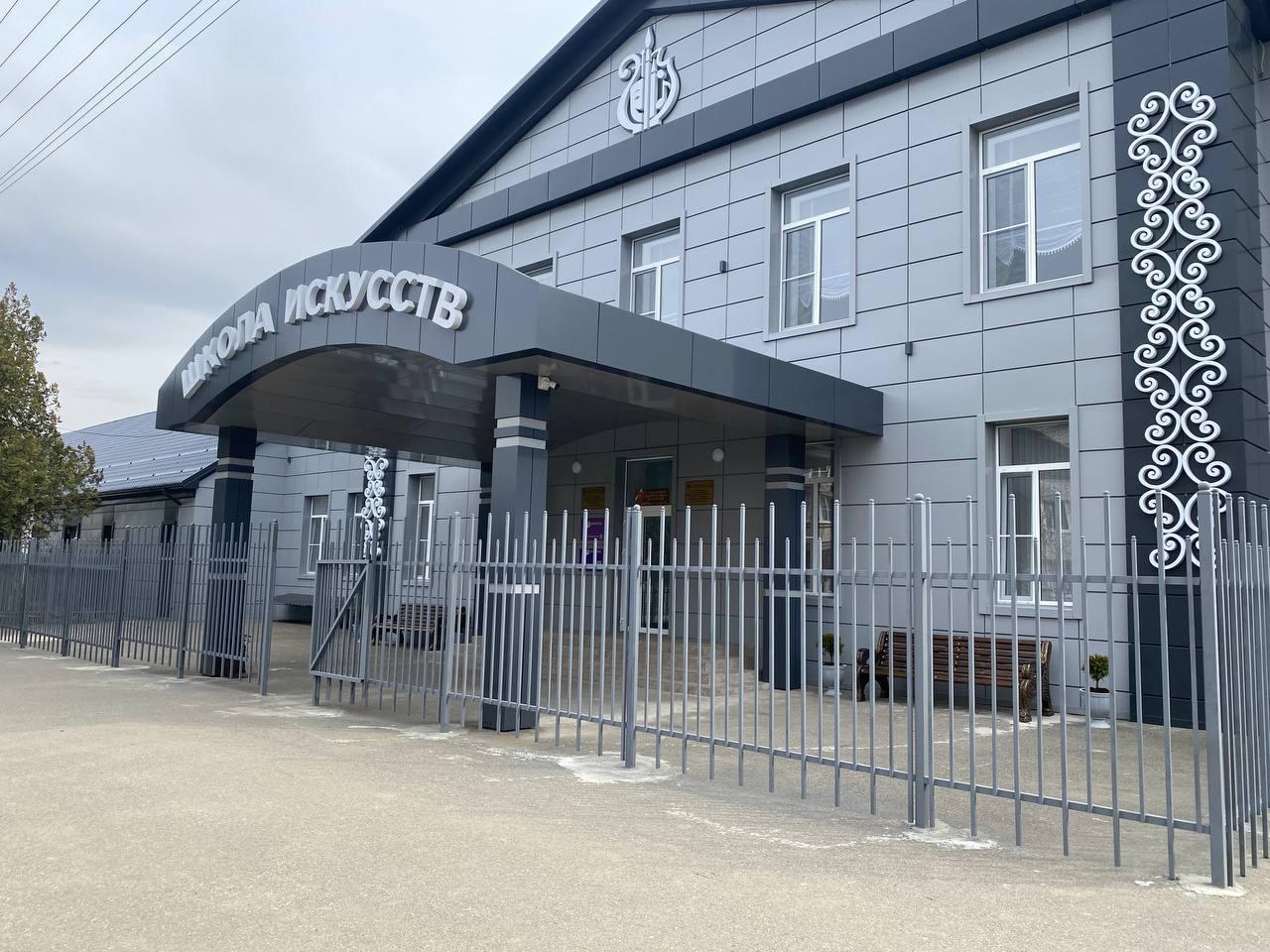 11:02
Среда
0
5 466
В «Детской школе искусств посёлка Тульского» завешается благоустройство прилегающей территории
В «Детской школе искусств посёлка Тульского» завешается благоустройство прилегающей территории и внутреннего двора по программе Модернизации организаций подведомственных Министерству культуры
11:02
Среда
0
5 466
В «Детской школе искусств посёлка Тульского» завешается благоустройство прилегающей территории
В «Детской школе искусств посёлка Тульского» завешается благоустройство прилегающей территории и внутреннего двора по программе Модернизации организаций подведомственных Министерству культуры
 11:10
Четверг
0
5 313
В Доме культуры а. Джамбечий состоялась творческая встреча "В дар родной земле" с известным художником Асланом Махмудовичем Куановым
В Доме культуры а. Джамбечий состоялась творческая встреча "В дар родной земле" с известным художником Асланом Махмудовичем Куановым! Народный художник Республики Адыгея, заслуженный художник
11:10
Четверг
0
5 313
В Доме культуры а. Джамбечий состоялась творческая встреча "В дар родной земле" с известным художником Асланом Махмудовичем Куановым
В Доме культуры а. Джамбечий состоялась творческая встреча "В дар родной земле" с известным художником Асланом Махмудовичем Куановым! Народный художник Республики Адыгея, заслуженный художник
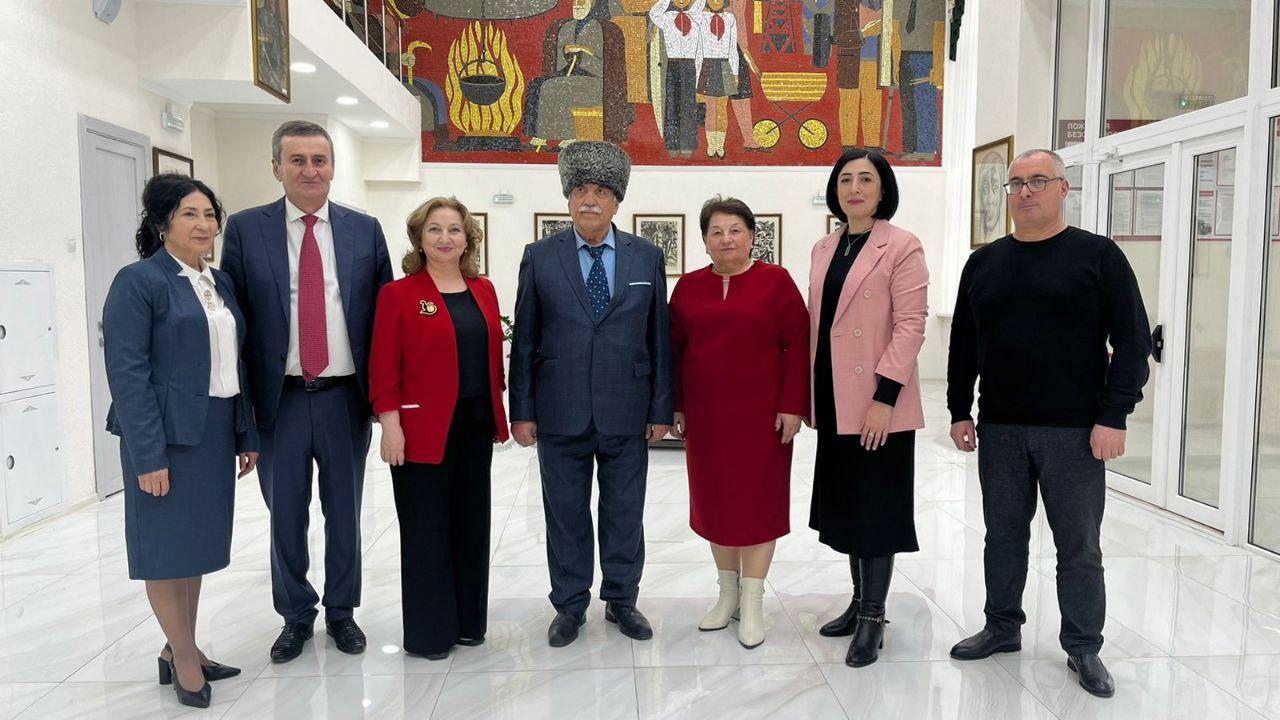 11:08
Четверг
5 387
Габукайский Дом культуры встречал земляка - народного художника Российской Федерации Теучежа Ката
11:08
Четверг
5 387
Габукайский Дом культуры встречал земляка - народного художника Российской Федерации Теучежа Ката
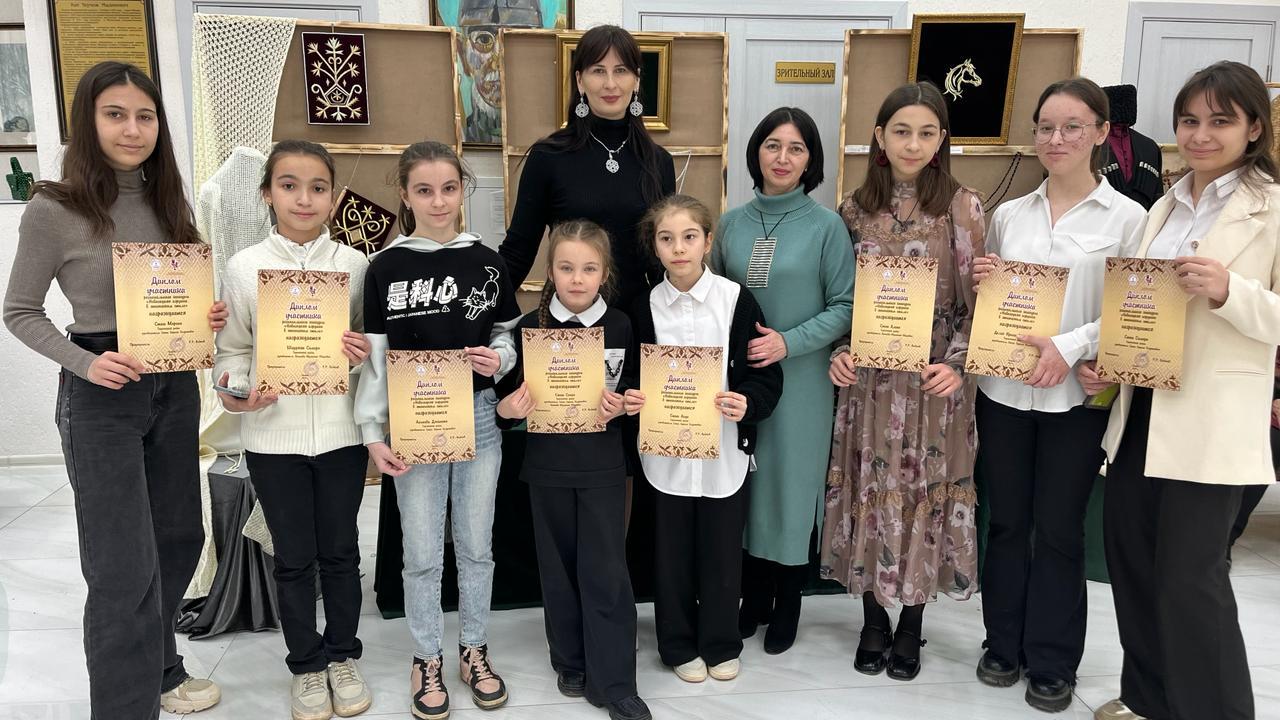 15:08
Среда
4 969
В Габукайском сельском Доме культуры им. Т.М. Ката прошла выставка народных ремесел «Ремёсла, ставшие искусством»
15:08
Среда
4 969
В Габукайском сельском Доме культуры им. Т.М. Ката прошла выставка народных ремесел «Ремёсла, ставшие искусством»
 11:10
Четверг
5 313
В Доме культуры а. Джамбечий состоялась творческая встреча "В дар родной земле" с известным художником Асланом Махмудовичем Куановым
11:10
Четверг
5 313
В Доме культуры а. Джамбечий состоялась творческая встреча "В дар родной земле" с известным художником Асланом Махмудовичем Куановым
 11:08
Четверг
5 387
Габукайский Дом культуры встречал земляка - народного художника Российской Федерации Теучежа Ката
11:08
Четверг
5 387
Габукайский Дом культуры встречал земляка - народного художника Российской Федерации Теучежа Ката
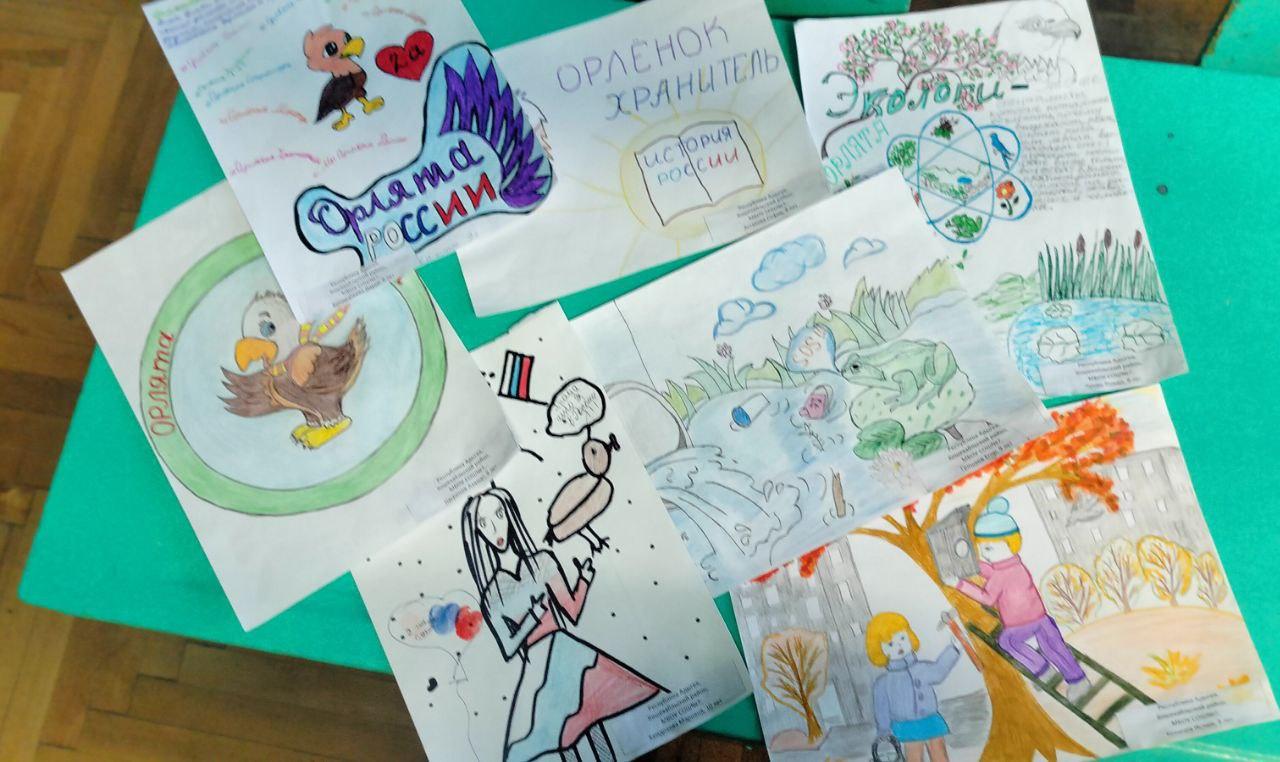 09:48
Среда
0
4 986
В Адыгее объявлен сбор рисунков, которые будут опубликованы в журнале "Орлята России"
Росдетцентр объявил о сборе рисунков. Самые яркие и интересные работы будут опубликованы в журнале в рубрике "Орлята России". Рисунки должны отображать ценности одного из треков: " Орленок- Эрудит",
09:48
Среда
0
4 986
В Адыгее объявлен сбор рисунков, которые будут опубликованы в журнале "Орлята России"
Росдетцентр объявил о сборе рисунков. Самые яркие и интересные работы будут опубликованы в журнале в рубрике "Орлята России". Рисунки должны отображать ценности одного из треков: " Орленок- Эрудит",
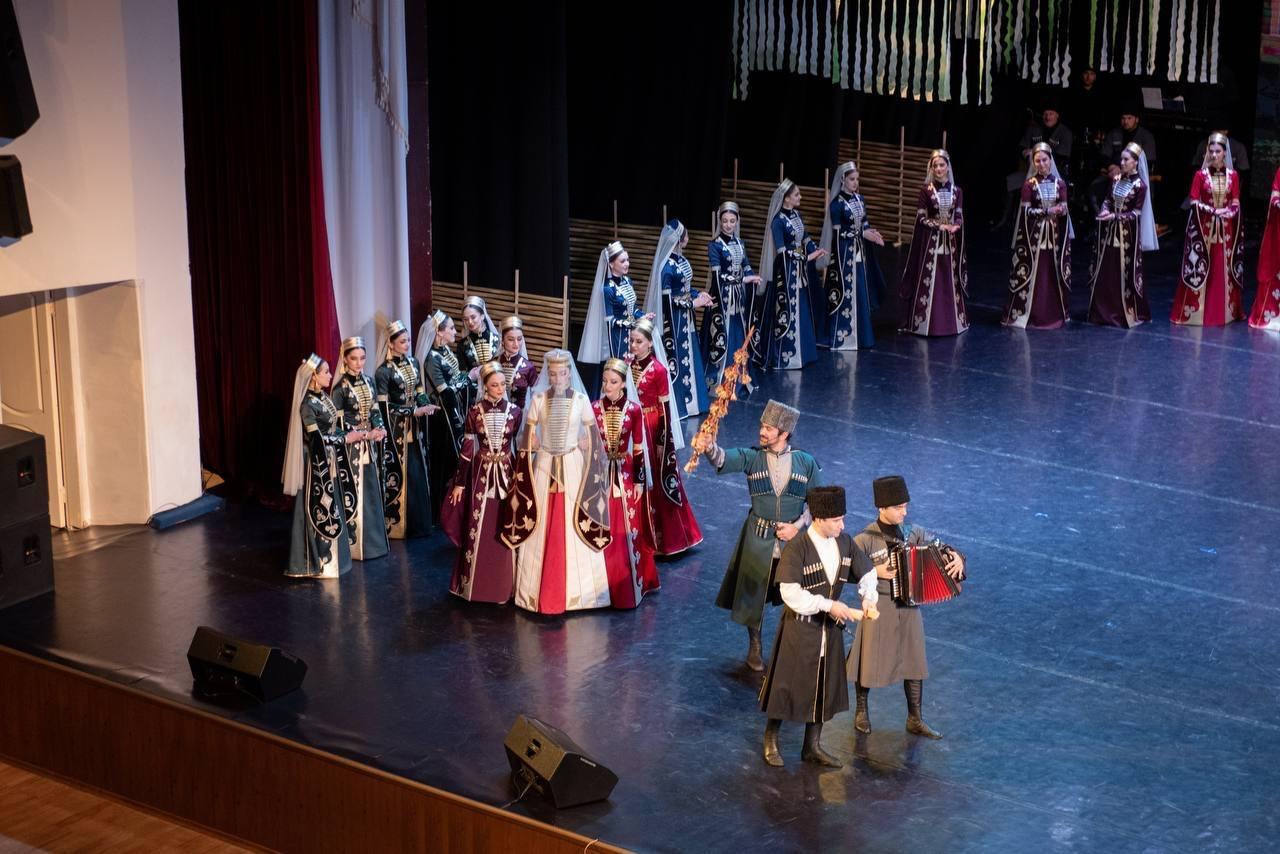 15:34
Понедельник
0
3 115
«Нальмэс» выступает в районах республики с хореографическим спектаклем «Адыгская народная свадьба»
Государственный академический ансамбль народного танца Адыгеи «Нальмэс» Концертного объединения Республики Адыгеи выступает с хореографическим спектаклем «Адыгская народная свадьба» («Адыгэ нысэщэ
15:34
Понедельник
0
3 115
«Нальмэс» выступает в районах республики с хореографическим спектаклем «Адыгская народная свадьба»
Государственный академический ансамбль народного танца Адыгеи «Нальмэс» Концертного объединения Республики Адыгеи выступает с хореографическим спектаклем «Адыгская народная свадьба» («Адыгэ нысэщэ
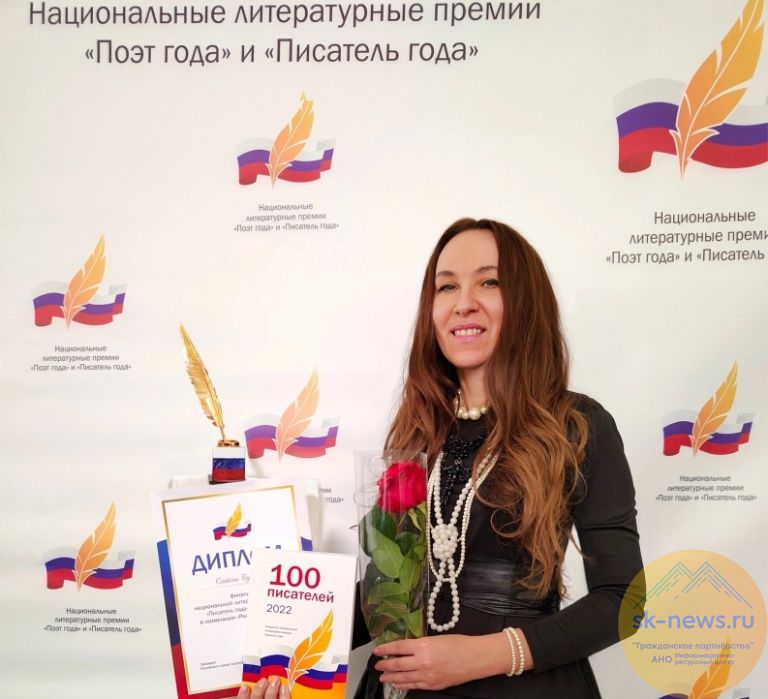 10:43
Понедельник
0
2 164
Показ мультфильма по мотивам сказок писательницы из Адыгеи пройдет на ТВ Ставрополья, КЧР и КБР
Мультяшные герои на телевидении не только этих северокавказских регионов, но также Краснодарского края и соседней с ним республики заговорят на русском и черкесском языках. Молодёжная писательница
10:43
Понедельник
0
2 164
Показ мультфильма по мотивам сказок писательницы из Адыгеи пройдет на ТВ Ставрополья, КЧР и КБР
Мультяшные герои на телевидении не только этих северокавказских регионов, но также Краснодарского края и соседней с ним республики заговорят на русском и черкесском языках. Молодёжная писательница
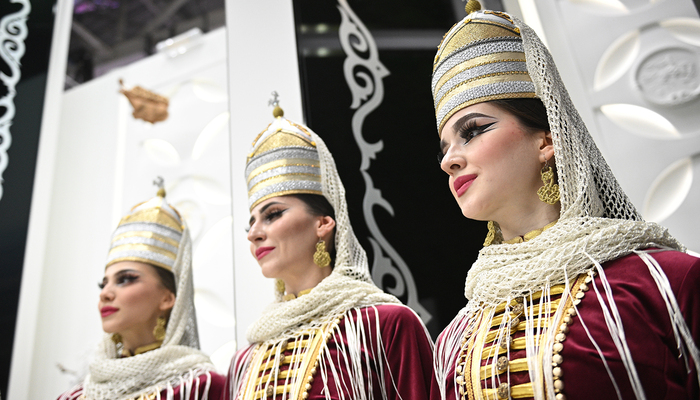 09:09
Понедельник
0
712
Шеф-регион Республика Адыгея посетила стенд Херсонской области на ВДНХ
Шеф-регион Республика Адыгея посетила стенд Херсонской области на ВДНХ Мастер спорта СССР по самбо и дзюдо Юнус Хот, житель Республики Адыгея, выразил наилучшие пожелания жителям Херсонской области,
09:09
Понедельник
0
712
Шеф-регион Республика Адыгея посетила стенд Херсонской области на ВДНХ
Шеф-регион Республика Адыгея посетила стенд Херсонской области на ВДНХ Мастер спорта СССР по самбо и дзюдо Юнус Хот, житель Республики Адыгея, выразил наилучшие пожелания жителям Херсонской области,
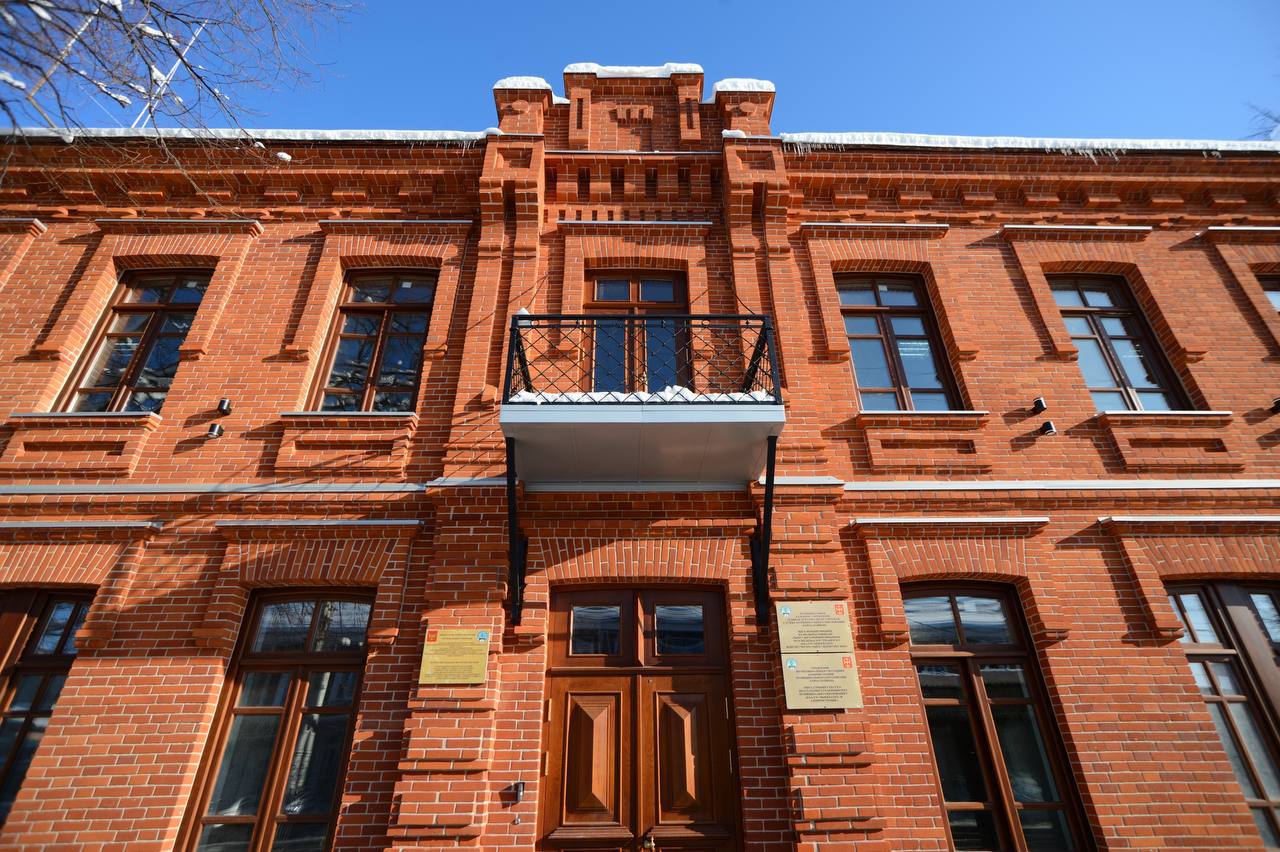 09:08
Понедельник
0
685
В столице Адыгеи завершилась реставрация памятника архитектуры
В историческом центре Майкопа завершилась реставрация памятника архитектуры, расположенного на ул. Жуковского, 56. Здание было построено в конце XIX века. Первоначально дом использовался как жилой,
09:08
Понедельник
0
685
В столице Адыгеи завершилась реставрация памятника архитектуры
В историческом центре Майкопа завершилась реставрация памятника архитектуры, расположенного на ул. Жуковского, 56. Здание было построено в конце XIX века. Первоначально дом использовался как жилой,
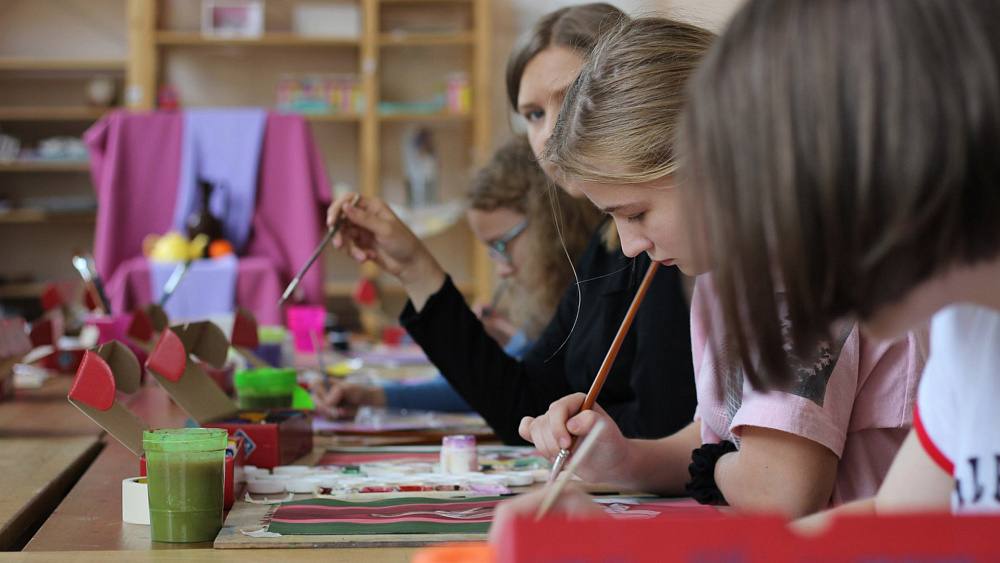 13:48
Четверг
0
3 757
В майкопском Центре творчества занимается более двух тысяч детей
Центр творчества детей и взрослых города Майкопа продолжает занятия по различным программам допобразования. На сегодняшний день деятельность центра охватывает более двух тысяч детей. В ходе обучения
13:48
Четверг
0
3 757
В майкопском Центре творчества занимается более двух тысяч детей
Центр творчества детей и взрослых города Майкопа продолжает занятия по различным программам допобразования. На сегодняшний день деятельность центра охватывает более двух тысяч детей. В ходе обучения
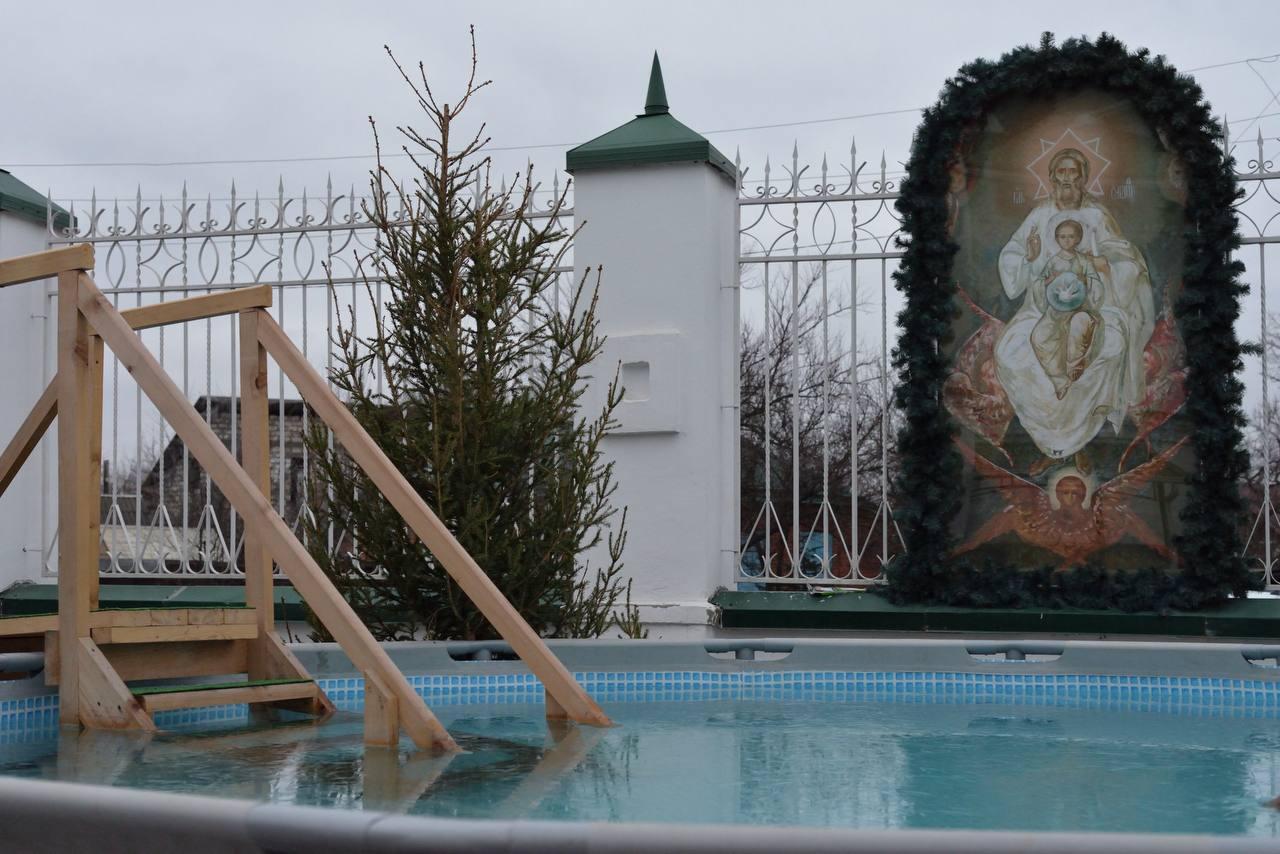 13:46
Четверг
0
1 942
В Майкопе оборудованы места для Крещенских купаний
В ночь с 18 на 19 января православные христиане отмечают праздник Крещения Господня. Традиционно после вечерних богослужений верующие совершают крещенские купания. В республиканской епархии сообщили,
13:46
Четверг
0
1 942
В Майкопе оборудованы места для Крещенских купаний
В ночь с 18 на 19 января православные христиане отмечают праздник Крещения Господня. Традиционно после вечерних богослужений верующие совершают крещенские купания. В республиканской епархии сообщили,
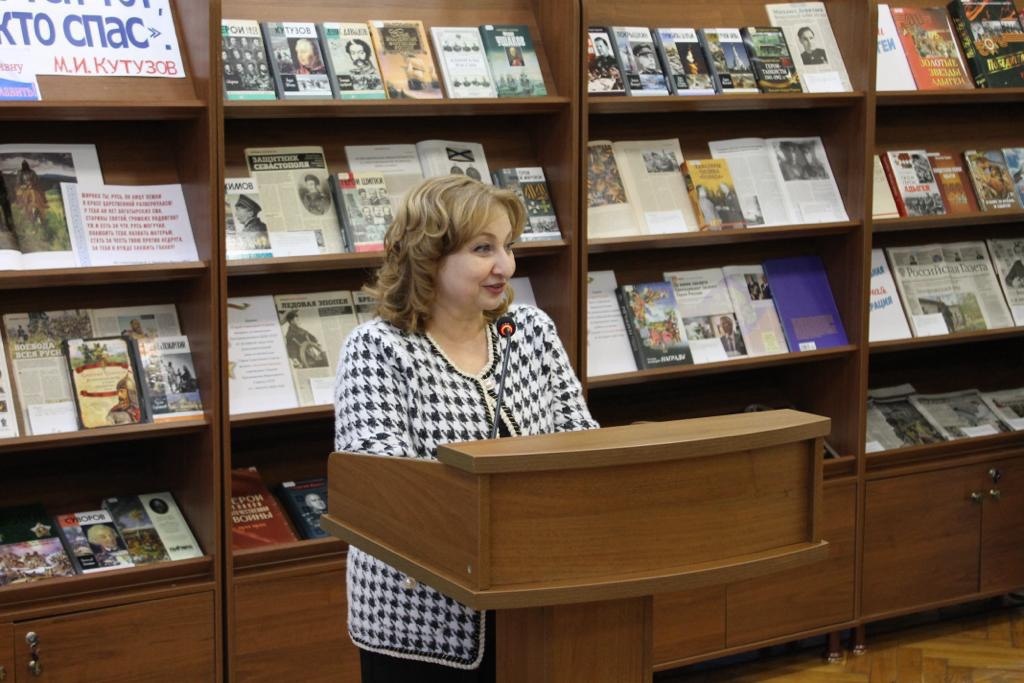 17:39
Пятница
0
2 176
В Национальной библиотеке РА прошла передача копий «Майкопской газеты», выходившей в Майкопе в 1910 – 1915 гг.
Оцифровка редкого печатного издания стала возможна благодаря грантовому проекту «Майкопцы : возвращенные имена», реализуемого АНО «Дом Шварца» при поддержке Министерства культуры Республики Адыгея и
17:39
Пятница
0
2 176
В Национальной библиотеке РА прошла передача копий «Майкопской газеты», выходившей в Майкопе в 1910 – 1915 гг.
Оцифровка редкого печатного издания стала возможна благодаря грантовому проекту «Майкопцы : возвращенные имена», реализуемого АНО «Дом Шварца» при поддержке Министерства культуры Республики Адыгея и






